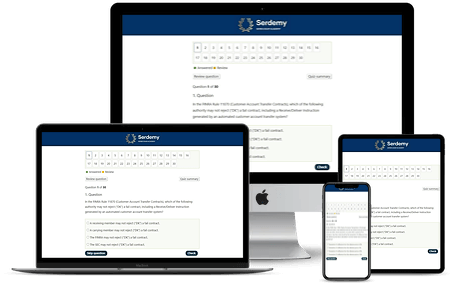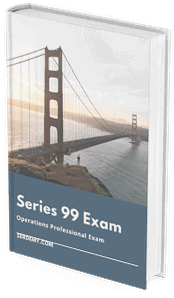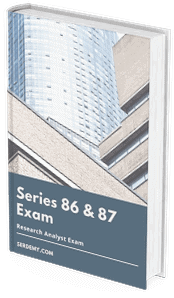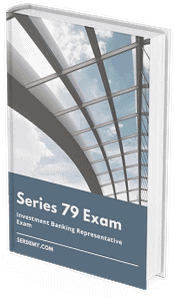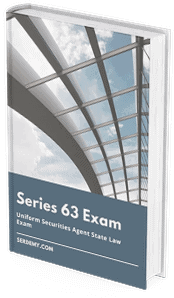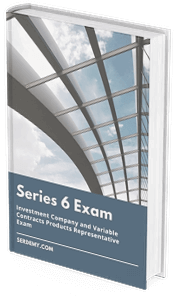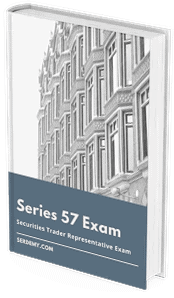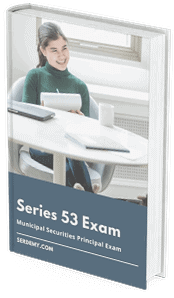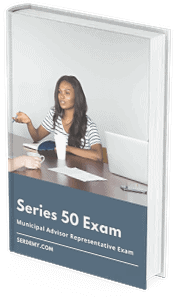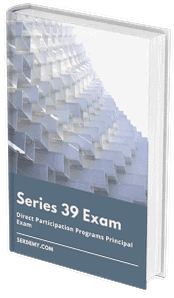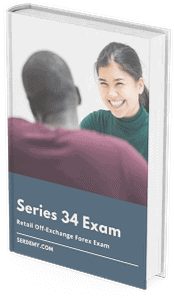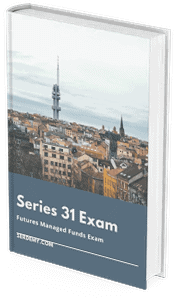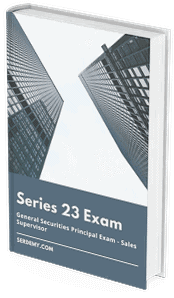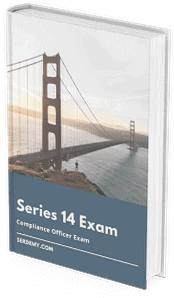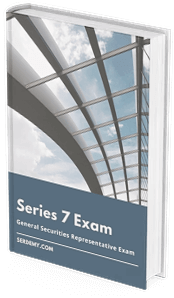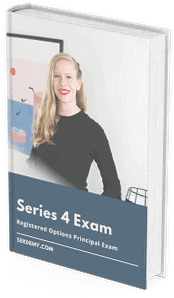Quiz-summary
0 of 30 questions completed
Questions:
- 1
- 2
- 3
- 4
- 5
- 6
- 7
- 8
- 9
- 10
- 11
- 12
- 13
- 14
- 15
- 16
- 17
- 18
- 19
- 20
- 21
- 22
- 23
- 24
- 25
- 26
- 27
- 28
- 29
- 30
Information
Premium Practice Questions
You have already completed the quiz before. Hence you can not start it again.
Quiz is loading...
You must sign in or sign up to start the quiz.
You have to finish following quiz, to start this quiz:
Results
0 of 30 questions answered correctly
Your time:
Time has elapsed
Categories
- Not categorized 0%
- 1
- 2
- 3
- 4
- 5
- 6
- 7
- 8
- 9
- 10
- 11
- 12
- 13
- 14
- 15
- 16
- 17
- 18
- 19
- 20
- 21
- 22
- 23
- 24
- 25
- 26
- 27
- 28
- 29
- 30
- Answered
- Review
-
Question 1 of 30
1. Question
An assessment of the ‘Orion Family Trust’ is required by the Chief Compliance Officer of Apex Brokerage to determine its eligibility for Initial Public Offering (IPO) allocations. The trust’s beneficiaries and their respective interests are as follows: the grantor’s son, a registered representative (4% interest); the grantor’s daughter, who is married to and financially supported by a registered representative (5% interest); a registered charitable foundation (70% interest); the grantor’s nephew, a physician (11% interest); and the grantor’s cousin, a portfolio manager for a large institutional hedge fund (10% interest). Based on FINRA Rule 5130, what determination should the CCO make regarding the trust’s ability to participate in new equity issues?
Correct
The first step is to identify which beneficiaries of the Orion Family Trust are considered “restricted persons” under FINRA Rule 5130. Restricted persons include FINRA member firms and their associated persons (like registered representatives), as well as their immediate family members. Immediate family includes spouses, children, parents, siblings, and in-laws, provided they live in the same household as or are financially dependent on the associated person. In this scenario: 1. The grantor’s son is a registered representative, making him a restricted person. His beneficial interest is 4%. 2. The grantor’s daughter is married to and lives with a registered representative, qualifying her as an immediate family member of an associated person. She is therefore a restricted person. Her beneficial interest is 5%. 3. A charitable foundation is generally not a restricted person. 4. The grantor’s nephew, a physician, is not a restricted person. 5. The grantor’s cousin, a portfolio manager for a hedge fund, is not a restricted person under this rule, as the definition targets broker-dealer personnel, not all investment professionals. The next step is to calculate the aggregate beneficial interest of all restricted persons in the trust. This is the sum of the interests of the son and the daughter: \[4\% + 5\% = 9\%\] FINRA Rule 5130 includes a “de minimis” exemption. This exemption allows an account to purchase a new issue if the beneficial interests of restricted persons in the account do not exceed 10% in the aggregate. Finally, we compare the calculated aggregate interest to the de minimis threshold: \[9\% < 10\%\] Since the total beneficial interest of the restricted persons is 9%, which is less than the 10% de minimis threshold, the Orion Family Trust is not considered a restricted account. Therefore, the trust is eligible to purchase shares in the new equity public offering.
Incorrect
The first step is to identify which beneficiaries of the Orion Family Trust are considered “restricted persons” under FINRA Rule 5130. Restricted persons include FINRA member firms and their associated persons (like registered representatives), as well as their immediate family members. Immediate family includes spouses, children, parents, siblings, and in-laws, provided they live in the same household as or are financially dependent on the associated person. In this scenario: 1. The grantor’s son is a registered representative, making him a restricted person. His beneficial interest is 4%. 2. The grantor’s daughter is married to and lives with a registered representative, qualifying her as an immediate family member of an associated person. She is therefore a restricted person. Her beneficial interest is 5%. 3. A charitable foundation is generally not a restricted person. 4. The grantor’s nephew, a physician, is not a restricted person. 5. The grantor’s cousin, a portfolio manager for a hedge fund, is not a restricted person under this rule, as the definition targets broker-dealer personnel, not all investment professionals. The next step is to calculate the aggregate beneficial interest of all restricted persons in the trust. This is the sum of the interests of the son and the daughter: \[4\% + 5\% = 9\%\] FINRA Rule 5130 includes a “de minimis” exemption. This exemption allows an account to purchase a new issue if the beneficial interests of restricted persons in the account do not exceed 10% in the aggregate. Finally, we compare the calculated aggregate interest to the de minimis threshold: \[9\% < 10\%\] Since the total beneficial interest of the restricted persons is 9%, which is less than the 10% de minimis threshold, the Orion Family Trust is not considered a restricted account. Therefore, the trust is eligible to purchase shares in the new equity public offering.
-
Question 2 of 30
2. Question
Priya, the Chief Compliance Officer for Apex Securities, is conducting a supervisory review of the prior day’s trading activity. She observes that the firm’s institutional desk received a large, not-held market order to purchase 500,000 shares of ZYX Corp. for a pension fund client. The order was worked throughout the day in smaller increments. During the same period, Apex’s separate proprietary trading desk, which is located on a different floor and operates under a distinct management structure, executed several automated buy orders in ZYX Corp. for the firm’s account as part of a pre-programmed quantitative strategy. In determining whether a violation of FINRA Rule 5320 occurred, which factor is most critical for Priya’s analysis?
Correct
This is a conceptual question and does not involve a mathematical calculation. The central regulation at issue is FINRA Rule 5320, which prohibits a member firm from trading a security for its own account when it has knowledge of an unexecuted customer order for that same security that could be executed at the same or a better price. This is commonly known as trading ahead of a customer order. However, the rule provides specific exceptions. The most relevant exception in this scenario is detailed in Supplementary Material .02 of the rule, which allows for proprietary trading by a department of the firm if effective information barrier procedures and controls are in place. These barriers must be designed to prevent the internal dissemination of information about the customer’s order to the personnel responsible for the firm’s proprietary trading. Therefore, the mere occurrence of proprietary trading while a customer order is pending is not a per se violation. The determinative factor for a compliance review is whether the firm’s information barriers were robust, properly implemented, and effective in practice. The compliance officer’s investigation must focus on verifying that the proprietary trading desk operated independently and did not have knowledge of the institutional desk’s unexecuted customer order. This involves reviewing system logs, communication records, and the documented supervisory procedures required under FINRA Rule 3110 to ensure the integrity of the information barrier. The “not-held” nature of the order grants the trader discretion over execution but does not nullify the firm’s obligations under Rule 5320. Similarly, the relative size of the trades or the final execution price for the customer are secondary to the core issue of whether the proprietary trading was conducted with knowledge of the customer’s order, which is what the information barrier is designed to prevent.
Incorrect
This is a conceptual question and does not involve a mathematical calculation. The central regulation at issue is FINRA Rule 5320, which prohibits a member firm from trading a security for its own account when it has knowledge of an unexecuted customer order for that same security that could be executed at the same or a better price. This is commonly known as trading ahead of a customer order. However, the rule provides specific exceptions. The most relevant exception in this scenario is detailed in Supplementary Material .02 of the rule, which allows for proprietary trading by a department of the firm if effective information barrier procedures and controls are in place. These barriers must be designed to prevent the internal dissemination of information about the customer’s order to the personnel responsible for the firm’s proprietary trading. Therefore, the mere occurrence of proprietary trading while a customer order is pending is not a per se violation. The determinative factor for a compliance review is whether the firm’s information barriers were robust, properly implemented, and effective in practice. The compliance officer’s investigation must focus on verifying that the proprietary trading desk operated independently and did not have knowledge of the institutional desk’s unexecuted customer order. This involves reviewing system logs, communication records, and the documented supervisory procedures required under FINRA Rule 3110 to ensure the integrity of the information barrier. The “not-held” nature of the order grants the trader discretion over execution but does not nullify the firm’s obligations under Rule 5320. Similarly, the relative size of the trades or the final execution price for the customer are secondary to the core issue of whether the proprietary trading was conducted with knowledge of the customer’s order, which is what the information barrier is designed to prevent.
-
Question 3 of 30
3. Question
Apex Global Markets, a large broker-dealer, maintains a proprietary trading desk and a research department, which are separated by a well-documented and audited information barrier. The research department finalizes a “strong buy” recommendation for a thinly traded security, Innovate Corp., and places it on the firm’s restricted list pending public release in 48 hours. Concurrently, the proprietary trading desk receives an unsolicited order from a major institutional client to sell a 200,000-share block of Innovate Corp. To accommodate the client, the head trader on the proprietary desk, who has no knowledge of the impending research report, decides to purchase the entire block for the firm’s proprietary account. As the firm’s Chief Compliance Officer, what is the most accurate assessment of this situation under FINRA rules?
Correct
Logical Analysis: 1. The primary regulation in question is FINRA Rule 5280, which prohibits a member from purposefully altering its inventory in a security in anticipation of issuing a research report on that security. 2. A critical component of this scenario is the existence of robust and effective information barrier procedures, as referenced in the NYSE/FINRA Joint Memo on the topic. These barriers are designed to prevent the flow of material, non-public information, such as an unreleased research report, from the research department to other departments like proprietary trading. 3. The supplementary material for FINRA Rule 5280 provides specific guidance. It clarifies that the rule is not intended to prevent a firm from facilitating unsolicited customer orders. 4. In this case, the proprietary trading desk’s action is not based on knowledge of the impending research report; the information barrier ensures they are unaware. Their decision to purchase the block of shares is a direct response to a large, unsolicited institutional customer order. This is a classic example of a facilitation trade. 5. Therefore, the proprietary trading desk is not acting “in anticipation of” the research report. Their action is motivated by the need to service a client. As long as the firm can document the effectiveness of its information barrier and the unsolicited nature of the customer order, the trade is permissible under the exceptions provided within the framework of Rule 5280. The firm’s compliance procedures must be able to demonstrate that the trading decision was made independently and without influence from the research department. The situation described involves a potential conflict between a firm’s proprietary trading activities and its research dissemination, governed primarily by FINRA Rule 5280, Trading Ahead of Research Reports. This rule is designed to prevent firms from using advance knowledge of their own research to trade for their own benefit. However, the rule and its associated guidance recognize the complex nature of large, multi-service financial firms. A key mitigating factor is the implementation of effective information barriers, which are policies and procedures that segregate departments and control the flow of sensitive, non-public information. When an information barrier is demonstrably effective, the trading desk is not considered to possess the information held by the research department. Furthermore, the rule explicitly provides for exceptions, particularly for trades that are undertaken to facilitate unsolicited customer orders. In this scenario, the proprietary desk’s decision to purchase the block is not a speculative bet based on the upcoming report but a necessary action to accommodate a large institutional client’s request to sell. The unsolicited nature of the customer order is paramount. Therefore, because the trading desk is operating without knowledge of the report due to the information barrier and is acting to facilitate a customer order, its actions do not violate the spirit or letter of Rule 5280. The compliance officer’s role is to ensure that these conditions are met and well-documented.
Incorrect
Logical Analysis: 1. The primary regulation in question is FINRA Rule 5280, which prohibits a member from purposefully altering its inventory in a security in anticipation of issuing a research report on that security. 2. A critical component of this scenario is the existence of robust and effective information barrier procedures, as referenced in the NYSE/FINRA Joint Memo on the topic. These barriers are designed to prevent the flow of material, non-public information, such as an unreleased research report, from the research department to other departments like proprietary trading. 3. The supplementary material for FINRA Rule 5280 provides specific guidance. It clarifies that the rule is not intended to prevent a firm from facilitating unsolicited customer orders. 4. In this case, the proprietary trading desk’s action is not based on knowledge of the impending research report; the information barrier ensures they are unaware. Their decision to purchase the block of shares is a direct response to a large, unsolicited institutional customer order. This is a classic example of a facilitation trade. 5. Therefore, the proprietary trading desk is not acting “in anticipation of” the research report. Their action is motivated by the need to service a client. As long as the firm can document the effectiveness of its information barrier and the unsolicited nature of the customer order, the trade is permissible under the exceptions provided within the framework of Rule 5280. The firm’s compliance procedures must be able to demonstrate that the trading decision was made independently and without influence from the research department. The situation described involves a potential conflict between a firm’s proprietary trading activities and its research dissemination, governed primarily by FINRA Rule 5280, Trading Ahead of Research Reports. This rule is designed to prevent firms from using advance knowledge of their own research to trade for their own benefit. However, the rule and its associated guidance recognize the complex nature of large, multi-service financial firms. A key mitigating factor is the implementation of effective information barriers, which are policies and procedures that segregate departments and control the flow of sensitive, non-public information. When an information barrier is demonstrably effective, the trading desk is not considered to possess the information held by the research department. Furthermore, the rule explicitly provides for exceptions, particularly for trades that are undertaken to facilitate unsolicited customer orders. In this scenario, the proprietary desk’s decision to purchase the block is not a speculative bet based on the upcoming report but a necessary action to accommodate a large institutional client’s request to sell. The unsolicited nature of the customer order is paramount. Therefore, because the trading desk is operating without knowledge of the report due to the information barrier and is acting to facilitate a customer order, its actions do not violate the spirit or letter of Rule 5280. The compliance officer’s role is to ensure that these conditions are met and well-documented.
-
Question 4 of 30
4. Question
The Chief Compliance Officer at Aethelred Acquisitions, a multi-service broker-dealer, is reviewing a complex situation. The firm’s investment banking division is confidentially advising a major client on a forthcoming hostile tender offer for Saxon Solutions, Inc. Concurrently and independently, a research analyst on the public side of the firm’s information barrier has prepared a draft research report with a strong “Buy” recommendation for Saxon Solutions, based on fundamental analysis. A proprietary trader, who has seen the draft report but is firewalled from the M&A deal, wishes to establish a long position in Saxon Solutions for the firm’s account before the report is published. Given this confluence of events, which regulatory principle must take precedence, and what is the most appropriate immediate action for the Chief Compliance Officer to enforce?
Correct
The analysis proceeds by identifying and prioritizing the applicable regulations. First, the firm possesses two distinct types of material, non-public information (MNPI). The first is the impending hostile tender offer, which is governed by SEC Rule 14e-3. The second is the draft research report, with trading ahead of it governed by FINRA Rule 5280. The core of the compliance decision rests on which rule imposes a more stringent and immediate prohibition. SEC Rule 14e-3 establishes a strict “disclose or abstain from trading” standard for any person who possesses MNPI relating to a tender offer, once the offering person has taken substantial steps to commence it. The rule prohibits trading in the target’s securities. While an effective information barrier is a valid defense under Rule 14e-3(b), the compliance officer’s primary duty is to ensure the barrier is not breached and to prevent trades that could create the appearance or reality of a violation. The knowledge of the tender offer held by the investment banking division is imputed to the firm as a whole. FINRA Rule 5280 prohibits a firm from trading based on advance knowledge of its own research. While a serious violation, the regulatory framework around tender offers is exceptionally strict due to their profound market impact. Therefore, the MNPI related to the tender offer under Rule 14e-3 takes precedence over the MNPI related to the research report. The most definitive and appropriate action to prevent a violation of Rule 14e-3 is to halt all proprietary trading in the security. This is accomplished by placing the security on the firm’s restricted list. This action effectively neutralizes the risk, regardless of the trader’s stated rationale for wanting to execute the trade.
Incorrect
The analysis proceeds by identifying and prioritizing the applicable regulations. First, the firm possesses two distinct types of material, non-public information (MNPI). The first is the impending hostile tender offer, which is governed by SEC Rule 14e-3. The second is the draft research report, with trading ahead of it governed by FINRA Rule 5280. The core of the compliance decision rests on which rule imposes a more stringent and immediate prohibition. SEC Rule 14e-3 establishes a strict “disclose or abstain from trading” standard for any person who possesses MNPI relating to a tender offer, once the offering person has taken substantial steps to commence it. The rule prohibits trading in the target’s securities. While an effective information barrier is a valid defense under Rule 14e-3(b), the compliance officer’s primary duty is to ensure the barrier is not breached and to prevent trades that could create the appearance or reality of a violation. The knowledge of the tender offer held by the investment banking division is imputed to the firm as a whole. FINRA Rule 5280 prohibits a firm from trading based on advance knowledge of its own research. While a serious violation, the regulatory framework around tender offers is exceptionally strict due to their profound market impact. Therefore, the MNPI related to the tender offer under Rule 14e-3 takes precedence over the MNPI related to the research report. The most definitive and appropriate action to prevent a violation of Rule 14e-3 is to halt all proprietary trading in the security. This is accomplished by placing the security on the firm’s restricted list. This action effectively neutralizes the risk, regardless of the trader’s stated rationale for wanting to execute the trade.
-
Question 5 of 30
5. Question
Apex Securities, a broker-dealer, maintains a strict information barrier between its research and proprietary trading departments. The firm’s Chief Compliance Officer, Kenji, learns that the research department is finalizing a highly anticipated “Upgrade to Strong Buy” report on a mid-cap biotechnology company, scheduled for dissemination the next morning. A review of the firm’s trading activity shows that the proprietary trading desk, citing its own independent algorithmic analysis, has significantly increased its long position in the same company’s stock over the past three trading sessions. To ensure the firm is in compliance with all applicable regulations, what is the most appropriate and immediate action for Kenji to take?
Correct
The core issue revolves around FINRA Rule 5280, which prohibits a member firm from altering its inventory in a security based on nonpublic advance knowledge of the content or timing of a research report. However, the rule provides a safe harbor for trading activities that are demonstrably independent of the research department, provided that robust information barriers are in place. The existence of these barriers, often called Chinese Walls, is a critical component of a firm’s compliance framework. The purpose of these procedures is to prevent the flow of material, nonpublic information between departments, such as research and trading. A Chief Compliance Officer’s responsibility, under general supervisory rules like FINRA Rule 3110 and NYSE Rule 342, is not merely to ensure that such barriers exist on paper, but to actively supervise and test their effectiveness. When a situation arises that creates the appearance of a conflict or a potential rule violation, the CCO must take immediate steps to investigate. The most prudent course of action is to verify the integrity of the information barrier and the independence of the trading desk’s rationale before the event that could trigger the violation, which in this case is the publication of the research report. This involves a documented review of the trading desk’s models, communications, and decision-making process to confirm that their activity was not influenced by the pending research. Temporarily halting the specific trading activity during this review is a necessary risk-mitigation step to prevent an actual violation from occurring.
Incorrect
The core issue revolves around FINRA Rule 5280, which prohibits a member firm from altering its inventory in a security based on nonpublic advance knowledge of the content or timing of a research report. However, the rule provides a safe harbor for trading activities that are demonstrably independent of the research department, provided that robust information barriers are in place. The existence of these barriers, often called Chinese Walls, is a critical component of a firm’s compliance framework. The purpose of these procedures is to prevent the flow of material, nonpublic information between departments, such as research and trading. A Chief Compliance Officer’s responsibility, under general supervisory rules like FINRA Rule 3110 and NYSE Rule 342, is not merely to ensure that such barriers exist on paper, but to actively supervise and test their effectiveness. When a situation arises that creates the appearance of a conflict or a potential rule violation, the CCO must take immediate steps to investigate. The most prudent course of action is to verify the integrity of the information barrier and the independence of the trading desk’s rationale before the event that could trigger the violation, which in this case is the publication of the research report. This involves a documented review of the trading desk’s models, communications, and decision-making process to confirm that their activity was not influenced by the pending research. Temporarily halting the specific trading activity during this review is a necessary risk-mitigation step to prevent an actual violation from occurring.
-
Question 6 of 30
6. Question
An assessment of a trading surveillance alert at broker-dealer Omni Capital reveals that Marco, a proprietary trader, executed a substantial purchase of call options in Zenith Corp. (ZNTH) one hour before the market close. The firm’s system shows that Omni’s research department is scheduled to release a “strong buy” upgrade on ZNTH the following morning. Omni Capital maintains formal information barrier policies and procedures between its research and trading departments. When questioned by Priya, the Chief Compliance Officer, Marco asserts his trade was based entirely on a proprietary algorithm that detected unusual market volume and volatility in ZNTH, which he interpreted as a signal of a forthcoming positive catalyst. Given this situation, what is the most critical determination Priya must make to evaluate compliance with FINRA Rule 5280?
Correct
The central issue revolves around FINRA Rule 5280, which prohibits a member firm from trading for its own proprietary account based on material, non-public information about an impending research report. A key component of this rule is the exception provided for firms that have implemented and maintain effective information barriers, often called Chinese Walls. The purpose of these barriers is to prevent the flow of sensitive information, such as the content and timing of a research report, from the research department to other departments, particularly trading. In this scenario, a proprietary trader has executed a trade that appears to anticipate the research report. The trader claims the trade was based on an independent quantitative analysis. While the validity of the trader’s model is a relevant part of a full investigation, the most critical and primary determination for the Compliance Officer under Rule 5280 is to assess the integrity of the information barrier. The existence of a policy is not sufficient; the firm must be able to demonstrate that the barrier was effective in practice for this specific instance. This involves a thorough review of all potential communication channels, including emails, instant messages, phone logs, and system access records, to confirm that no information about the research report was transmitted to the trading desk. If the barrier is proven to be intact, the firm has a strong defense that the trade was not based on the research information, and the trader’s independent justification becomes more credible. Conversely, if any breach is found, a serious violation has likely occurred, regardless of the trader’s claims about their model. Therefore, validating the information barrier’s effectiveness is the foundational step upon which the entire investigation rests.
Incorrect
The central issue revolves around FINRA Rule 5280, which prohibits a member firm from trading for its own proprietary account based on material, non-public information about an impending research report. A key component of this rule is the exception provided for firms that have implemented and maintain effective information barriers, often called Chinese Walls. The purpose of these barriers is to prevent the flow of sensitive information, such as the content and timing of a research report, from the research department to other departments, particularly trading. In this scenario, a proprietary trader has executed a trade that appears to anticipate the research report. The trader claims the trade was based on an independent quantitative analysis. While the validity of the trader’s model is a relevant part of a full investigation, the most critical and primary determination for the Compliance Officer under Rule 5280 is to assess the integrity of the information barrier. The existence of a policy is not sufficient; the firm must be able to demonstrate that the barrier was effective in practice for this specific instance. This involves a thorough review of all potential communication channels, including emails, instant messages, phone logs, and system access records, to confirm that no information about the research report was transmitted to the trading desk. If the barrier is proven to be intact, the firm has a strong defense that the trade was not based on the research information, and the trader’s independent justification becomes more credible. Conversely, if any breach is found, a serious violation has likely occurred, regardless of the trader’s claims about their model. Therefore, validating the information barrier’s effectiveness is the foundational step upon which the entire investigation rests.
-
Question 7 of 30
7. Question
An assessment of trading activity at a FINRA member firm, Apex Trading, reveals a specific sequence of events that requires a determination under FINRA Rule 5320. Apex maintains a proprietary trading desk and an institutional client services desk, which are separated by robust and regularly tested information barriers. The institutional desk receives a “not held” limit order from a large pension fund to purchase 50,000 shares of XYZ common stock at a price of $25.05 or better. Shortly thereafter, the proprietary trading desk, operating without any knowledge of the institutional customer’s order, purchases 5,000 shares of XYZ for the firm’s own account at a price of $25.04. A few minutes later, the institutional desk begins to execute the pension fund’s order at $25.05. As the Chief Compliance Officer, what is the correct regulatory conclusion regarding this activity?
Correct
The core issue is the application of FINRA Rule 5320, the Prohibition Against Trading Ahead of Customer Orders, also known as the limit order protection rule. This rule generally prevents a member firm from trading a security for its own account at a price that would satisfy a customer’s limit order without first executing that customer’s order. In this scenario, the firm’s proprietary desk purchased shares of XYZ at $25.04. This price is more favorable than the customer’s limit buy price of $25.05, which on its face appears to trigger the prohibition. However, Rule 5320 contains several important exceptions. The most directly applicable exception in this case is the “no-knowledge” or information barrier exception. The rule states that the prohibition does not apply to a trade for the firm’s account if the department that executed the trade had no knowledge of the customer order. The scenario explicitly states that robust information barriers are in place between the proprietary desk and the institutional client desk, and that the proprietary desk acted without knowledge of the customer’s order. Therefore, the proprietary desk’s trade is permissible under this exception. Other potential exceptions, such as the one for large orders (over 10,000 shares and $100,000 in value) and for orders from institutional accounts (provided certain disclosure and opt-in procedures are met), also exist and would be part of a comprehensive compliance review, but the information barrier is the key element that makes the described action permissible.
Incorrect
The core issue is the application of FINRA Rule 5320, the Prohibition Against Trading Ahead of Customer Orders, also known as the limit order protection rule. This rule generally prevents a member firm from trading a security for its own account at a price that would satisfy a customer’s limit order without first executing that customer’s order. In this scenario, the firm’s proprietary desk purchased shares of XYZ at $25.04. This price is more favorable than the customer’s limit buy price of $25.05, which on its face appears to trigger the prohibition. However, Rule 5320 contains several important exceptions. The most directly applicable exception in this case is the “no-knowledge” or information barrier exception. The rule states that the prohibition does not apply to a trade for the firm’s account if the department that executed the trade had no knowledge of the customer order. The scenario explicitly states that robust information barriers are in place between the proprietary desk and the institutional client desk, and that the proprietary desk acted without knowledge of the customer’s order. Therefore, the proprietary desk’s trade is permissible under this exception. Other potential exceptions, such as the one for large orders (over 10,000 shares and $100,000 in value) and for orders from institutional accounts (provided certain disclosure and opt-in procedures are met), also exist and would be part of a comprehensive compliance review, but the information barrier is the key element that makes the described action permissible.
-
Question 8 of 30
8. Question
Priya, the Chief Compliance Officer at Apex Global Markets, is reviewing the firm’s trade blotter. She observes that at 10:15 AM, the firm’s institutional desk received a large, not-held market order to purchase 200,000 shares of XYZ Corp. At 10:17 AM, before executing any portion of the client’s order, the firm’s proprietary trading desk executed a purchase of 5,000 shares of XYZ for its own account to capitalize on a perceived short-term pricing anomaly. The head trader later documented that this small proprietary trade did not adversely impact the market price available for the subsequent execution of the client’s order. Based on FINRA rules, what is the most accurate assessment of the proprietary desk’s action?
Correct
The situation described constitutes a direct violation of FINRA Rule 5320, which prohibits a member firm from trading a security for its own account while holding an unexecuted customer order for that same security. This practice is commonly known as trading ahead. The rule is designed to prevent firms from using the knowledge of impending customer orders to their own advantage, which would be a breach of their duty to the customer. In this scenario, the firm received a not-held market order from an institutional client. The subsequent execution of a proprietary trade in the same security, before any part of the customer’s order was filled, is the prohibited action. The trader’s justification that the proprietary trade was small and intended to test liquidity is not a valid defense under the rule. The rule’s prohibition is broad and aims to uphold the principles of fair dealing and the firm’s agency obligations. The existence of the customer order creates a duty that restricts the firm’s proprietary trading activity in that security until the customer order is executed. This is also related to FINRA Rule 2010, which requires firms to observe high standards of commercial honor and just and equitable principles of trade. Using customer order information for the firm’s benefit before fulfilling the customer’s order is inconsistent with these standards. The rule contains specific exceptions, such as for risk-mitigation hedging related to a customer facilitation, but a speculative arbitrage trade does not qualify for such an exception.
Incorrect
The situation described constitutes a direct violation of FINRA Rule 5320, which prohibits a member firm from trading a security for its own account while holding an unexecuted customer order for that same security. This practice is commonly known as trading ahead. The rule is designed to prevent firms from using the knowledge of impending customer orders to their own advantage, which would be a breach of their duty to the customer. In this scenario, the firm received a not-held market order from an institutional client. The subsequent execution of a proprietary trade in the same security, before any part of the customer’s order was filled, is the prohibited action. The trader’s justification that the proprietary trade was small and intended to test liquidity is not a valid defense under the rule. The rule’s prohibition is broad and aims to uphold the principles of fair dealing and the firm’s agency obligations. The existence of the customer order creates a duty that restricts the firm’s proprietary trading activity in that security until the customer order is executed. This is also related to FINRA Rule 2010, which requires firms to observe high standards of commercial honor and just and equitable principles of trade. Using customer order information for the firm’s benefit before fulfilling the customer’s order is inconsistent with these standards. The rule contains specific exceptions, such as for risk-mitigation hedging related to a customer facilitation, but a speculative arbitrage trade does not qualify for such an exception.
-
Question 9 of 30
9. Question
An assessment of a potential conflict at a broker-dealer, “Momentum Capital,” is presented to Mei, the Chief Compliance Officer. The firm’s research department has finalized a “STRONG SELL” recommendation for a widely-held technology stock, with dissemination scheduled for the next morning. Concurrently, the firm’s proprietary trading desk, which is separated from research by a well-established information barrier, has independently decided to liquidate its entire long position in the same stock based on its own quantitative models that signaled a severe market downturn. The head of proprietary trading has informed Mei of the desk’s intent to sell its position immediately. What is the most appropriate action for Mei to take in accordance with FINRA rules?
Correct
The central issue involves the application of FINRA Rule 5280, which addresses trading ahead of a firm’s own research reports. This rule prohibits a member firm from purposefully changing its inventory position in a security or a related derivative in anticipation of the issuance of a research report concerning that security. The core principle is to prevent a firm from profiting from the market impact of its own research before its clients have the opportunity to do so. In this scenario, the firm’s proprietary trading desk has developed an independent, documented rationale for purchasing the stock. The firm also has an information barrier in place, which is a required procedure to prevent the flow of material non-public information between departments like research and trading. However, the existence of an information barrier and an independent trading thesis does not provide a safe harbor from Rule 5280 when the firm, as an entity, is aware of both the pending research report and the proposed proprietary trade. The Chief Compliance Officer’s knowledge of both activities is critical. Since the CCO is aware that a material research report is about to be issued, allowing the proprietary desk to establish a large position in that same security would create, at a minimum, the appearance of trading in anticipation of the report. The most compliant course of action is to prevent the potential violation. Therefore, the CCO must instruct the proprietary trading desk to halt its plans to purchase the stock. The trade may only be considered after the research report has been publicly disseminated and the market has had a reasonable amount of time to absorb the information. This ensures the firm adheres to its obligations under FINRA Rule 5280 and maintains high standards of commercial honor.
Incorrect
The central issue involves the application of FINRA Rule 5280, which addresses trading ahead of a firm’s own research reports. This rule prohibits a member firm from purposefully changing its inventory position in a security or a related derivative in anticipation of the issuance of a research report concerning that security. The core principle is to prevent a firm from profiting from the market impact of its own research before its clients have the opportunity to do so. In this scenario, the firm’s proprietary trading desk has developed an independent, documented rationale for purchasing the stock. The firm also has an information barrier in place, which is a required procedure to prevent the flow of material non-public information between departments like research and trading. However, the existence of an information barrier and an independent trading thesis does not provide a safe harbor from Rule 5280 when the firm, as an entity, is aware of both the pending research report and the proposed proprietary trade. The Chief Compliance Officer’s knowledge of both activities is critical. Since the CCO is aware that a material research report is about to be issued, allowing the proprietary desk to establish a large position in that same security would create, at a minimum, the appearance of trading in anticipation of the report. The most compliant course of action is to prevent the potential violation. Therefore, the CCO must instruct the proprietary trading desk to halt its plans to purchase the stock. The trade may only be considered after the research report has been publicly disseminated and the market has had a reasonable amount of time to absorb the information. This ensures the firm adheres to its obligations under FINRA Rule 5280 and maintains high standards of commercial honor.
-
Question 10 of 30
10. Question
Assessment of a potential conflict between a firm’s trading obligations and its research activities reveals a critical compliance challenge. At Quantum Financial, a broker-dealer, the research department is set to release a “Buy” rating upgrade for InnovateCorp (INVC) at 9:00 AM the next day. This afternoon, the institutional trading desk receives a large, not-held market order from a pension fund to purchase 500,000 shares of INVC. The trader handling the order has knowledge of the impending research report due to a lapse in the firm’s information barrier. From a compliance perspective under FINRA rules, which course of action presents the most significant regulatory risk that the Chief Compliance Officer must prevent?
Correct
The central compliance issue revolves around the conflict between different regulatory obligations when a firm possesses material, non-public information about its own forthcoming research. The two primary rules in conflict are FINRA Rule 5280, which governs trading ahead of a research report, and FINRA Rule 5320, which prohibits trading ahead of customer orders, along with the duty of best execution under FINRA Rule 5310. FINRA Rule 5280 is designed to prevent a firm from purposefully altering its inventory or market-making activity in a security based on the knowledge of a pending research report that could reasonably be expected to affect the market price. The core principle is to prohibit the firm from profiting from its own research before clients and the public have the information. In this scenario, the information barrier has failed, and the trader has knowledge of the impending “Buy” upgrade. While delaying the customer’s order is a serious issue and a likely violation of the duty of best execution and potentially Rule 5320, the most significant and egregious regulatory risk involves the firm actively using the non-public research information for its own benefit. Purposely building a proprietary long position in InnovateCorp shares before the report’s release is a direct and intentional violation of FINRA Rule 5280. This action constitutes a manipulative practice, as the firm is front-running its own research to secure a profit at the expense of other market participants who are not privy to this information. This misuse of proprietary information for the firm’s gain is considered a more severe breach of market integrity than the improper handling of a single customer order, although both are violations. The compliance department’s primary objective must be to prevent the firm from engaging in such manipulative proprietary trading.
Incorrect
The central compliance issue revolves around the conflict between different regulatory obligations when a firm possesses material, non-public information about its own forthcoming research. The two primary rules in conflict are FINRA Rule 5280, which governs trading ahead of a research report, and FINRA Rule 5320, which prohibits trading ahead of customer orders, along with the duty of best execution under FINRA Rule 5310. FINRA Rule 5280 is designed to prevent a firm from purposefully altering its inventory or market-making activity in a security based on the knowledge of a pending research report that could reasonably be expected to affect the market price. The core principle is to prohibit the firm from profiting from its own research before clients and the public have the information. In this scenario, the information barrier has failed, and the trader has knowledge of the impending “Buy” upgrade. While delaying the customer’s order is a serious issue and a likely violation of the duty of best execution and potentially Rule 5320, the most significant and egregious regulatory risk involves the firm actively using the non-public research information for its own benefit. Purposely building a proprietary long position in InnovateCorp shares before the report’s release is a direct and intentional violation of FINRA Rule 5280. This action constitutes a manipulative practice, as the firm is front-running its own research to secure a profit at the expense of other market participants who are not privy to this information. This misuse of proprietary information for the firm’s gain is considered a more severe breach of market integrity than the improper handling of a single customer order, although both are violations. The compliance department’s primary objective must be to prevent the firm from engaging in such manipulative proprietary trading.
-
Question 11 of 30
11. Question
An assessment of the following sequence of events at Apex Global Markets requires a Compliance Officer to prioritize regulatory risks: Dr. Chen, a senior research analyst, is scheduled to release a “BUY” recommendation for Innovire Pharma (INVP) before the market opens tomorrow. The firm’s internal “coming research” calendar, accessible to certain sales and trading staff, reflects this. This afternoon, Leo, an institutional sales trader, receives an unsolicited order from Quantum Capital, a hedge fund client, to buy 500,000 shares of INVP. Leo knows that the firm’s proprietary trading desk holds a small, pre-existing short position in INVP. Given these facts, what is the most significant regulatory concern that requires the Compliance Officer’s immediate attention?
Correct
The primary regulatory concern is the potential for front-running in violation of FINRA Rule 5270. This rule prohibits trading in a security while in possession of material, non-public information concerning an imminent block transaction or other material event in that same security. In this context, the firm’s own unpublished research report, which contains a material “BUY” recommendation, constitutes material, non-public information. The large, unsolicited order from a client known for event-driven strategies, placed immediately before the report’s release, raises a significant red flag that the client may have obtained this information illicitly and is attempting to trade on it. This is a form of front-running. The firm’s immediate duty is to address the possibility that its information barriers have been breached and that it is potentially facilitating insider trading by the client. While other rules govern the firm’s own trading activities, the most severe and immediate risk stems from the client’s action and the potential information leak. The firm must not execute the order without first investigating the circumstances to avoid violating its duties under FINRA Rule 2010 regarding standards of commercial honor and to prevent being an instrument in a potential violation of securities laws. The firm’s own pre-existing proprietary position is a secondary concern compared to the large, suspicious client order.
Incorrect
The primary regulatory concern is the potential for front-running in violation of FINRA Rule 5270. This rule prohibits trading in a security while in possession of material, non-public information concerning an imminent block transaction or other material event in that same security. In this context, the firm’s own unpublished research report, which contains a material “BUY” recommendation, constitutes material, non-public information. The large, unsolicited order from a client known for event-driven strategies, placed immediately before the report’s release, raises a significant red flag that the client may have obtained this information illicitly and is attempting to trade on it. This is a form of front-running. The firm’s immediate duty is to address the possibility that its information barriers have been breached and that it is potentially facilitating insider trading by the client. While other rules govern the firm’s own trading activities, the most severe and immediate risk stems from the client’s action and the potential information leak. The firm must not execute the order without first investigating the circumstances to avoid violating its duties under FINRA Rule 2010 regarding standards of commercial honor and to prevent being an instrument in a potential violation of securities laws. The firm’s own pre-existing proprietary position is a secondary concern compared to the large, suspicious client order.
-
Question 12 of 30
12. Question
Momentum Securities, a FINRA member firm, operates both an institutional client trading desk and a separate proprietary trading desk. The two desks are segregated by robust, documented information barriers. At 10:15 AM, the institutional desk receives a large, not-held order to purchase 300,000 shares of Apex Innovations (APXI) on behalf of a pension fund. At 10:17 AM, based on its own quantitative models analyzing public market data, the proprietary trading desk independently identifies a buying opportunity and purchases 15,000 shares of APXI for the firm’s account. At 10:19 AM, the institutional desk begins executing the pension fund’s order. An assessment of this trading sequence by the firm’s Chief Compliance Officer, specifically concerning FINRA Rule 5320, should conclude that:
Correct
Step 1: Identify the governing regulation. The scenario describes a firm trading for its own proprietary account while in possession of a customer order for the same security. This fact pattern is directly addressed by FINRA Rule 5320, the Prohibition Against Trading Ahead of Customer Orders. Step 2: Analyze the core prohibition of FINRA Rule 5320. The rule generally prohibits a member from executing a trade for its own account in a security if it is holding a customer order for that same security. The firm’s proprietary purchase of 10,000 shares occurred before the execution of the institutional client’s buy order, and at a better price. On its face, this appears to be a violation. Step 3: Evaluate applicable exceptions to the rule. FINRA Rule 5320 contains several important exceptions. The most relevant exception in this scenario is the one for institutional account information barriers, often referred to as a “Chinese Wall.” This exception permits proprietary trading if the department conducting the trade had no knowledge of the customer’s order. Step 4: Apply the exception to the scenario’s facts. The scenario explicitly states that the firm’s proprietary trading desk is separated from the institutional trading desk by an effective information barrier. It also specifies that the proprietary desk’s trading decision was based on its own independent analysis and algorithmic signals, not on information about the client’s order. Step 5: Formulate a conclusion. Because the proprietary trading desk had no knowledge of the institutional customer’s order due to the presence of an effective information barrier, the firm’s proprietary trade would not be considered a violation of FINRA Rule 5320. The key is the documented and functional separation between the two desks. A compliance review would focus on auditing the effectiveness and integrity of this information barrier rather than citing a per se violation of the trading ahead rule. The existence of the barrier is the critical mitigating factor that allows the firm’s proprietary activity to occur without violating the rule. This exception is vital for large, multi-service financial firms that engage in both customer-facing and proprietary activities, as it prevents one department’s knowledge from paralyzing the legitimate, independent functions of another.
Incorrect
Step 1: Identify the governing regulation. The scenario describes a firm trading for its own proprietary account while in possession of a customer order for the same security. This fact pattern is directly addressed by FINRA Rule 5320, the Prohibition Against Trading Ahead of Customer Orders. Step 2: Analyze the core prohibition of FINRA Rule 5320. The rule generally prohibits a member from executing a trade for its own account in a security if it is holding a customer order for that same security. The firm’s proprietary purchase of 10,000 shares occurred before the execution of the institutional client’s buy order, and at a better price. On its face, this appears to be a violation. Step 3: Evaluate applicable exceptions to the rule. FINRA Rule 5320 contains several important exceptions. The most relevant exception in this scenario is the one for institutional account information barriers, often referred to as a “Chinese Wall.” This exception permits proprietary trading if the department conducting the trade had no knowledge of the customer’s order. Step 4: Apply the exception to the scenario’s facts. The scenario explicitly states that the firm’s proprietary trading desk is separated from the institutional trading desk by an effective information barrier. It also specifies that the proprietary desk’s trading decision was based on its own independent analysis and algorithmic signals, not on information about the client’s order. Step 5: Formulate a conclusion. Because the proprietary trading desk had no knowledge of the institutional customer’s order due to the presence of an effective information barrier, the firm’s proprietary trade would not be considered a violation of FINRA Rule 5320. The key is the documented and functional separation between the two desks. A compliance review would focus on auditing the effectiveness and integrity of this information barrier rather than citing a per se violation of the trading ahead rule. The existence of the barrier is the critical mitigating factor that allows the firm’s proprietary activity to occur without violating the rule. This exception is vital for large, multi-service financial firms that engage in both customer-facing and proprietary activities, as it prevents one department’s knowledge from paralyzing the legitimate, independent functions of another.
-
Question 13 of 30
13. Question
As the Chief Compliance Officer for Sterling Financial Group, you are reviewing the firm’s Order Audit Trail System (OATS) records. You uncover the following sequence of events for the stock of Innovate Corp. (INVC): – 10:15:00 AM: The institutional sales desk receives a “not-held” market order from a pension fund client to purchase 400,000 shares of INVC. – 10:17:30 AM: The firm’s proprietary trading desk, which has access to real-time institutional order flow data, begins purchasing INVC shares for the firm’s own account. – 10:22:00 AM: The proprietary desk completes its purchases, having acquired 50,000 shares of INVC. The market price of INVC has risen during this period. – 10:25:00 AM: The institutional desk begins executing the pension fund’s 400,000 share order, with the first fills occurring at the new, higher market price. Based on this sequence, which regulatory rule was most directly and specifically violated by the actions of Sterling’s proprietary trading desk?
Correct
The core issue in this scenario is the firm’s proprietary trading activity occurring after it received a customer order in the same security but before that customer’s order was executed. This specific sequence of actions is addressed by FINRA Rule 5320, Prohibition Against Trading Ahead of Customer Orders. This rule generally prohibits a member firm that accepts a customer order for an equity security from trading that security on the same side of the market for its own account at a price that would satisfy the customer’s order, unless it immediately thereafter executes the customer’s order up to the size and at the same or better price than it traded for its own account. In this case, the firm’s proprietary desk purchased shares for its own account while holding an unexecuted buy order from a customer. This action gave the firm’s account an advantage based on the knowledge of the customer’s trading intention, which is the exact conduct the rule is designed to prevent. While the activity also raises concerns about best execution under FINRA Rule 5310, as the proprietary trading likely caused an adverse price movement for the client, the most direct and specific violation is trading ahead of the customer’s order. Similarly, while it points to a potential failure of information barriers required under the Securities Exchange Act of 1934, the trading action itself is the primary violation. The “not-held” nature of the order provides the broker with discretion on time and price of execution but does not grant a license to trade ahead of the client for the firm’s own benefit.
Incorrect
The core issue in this scenario is the firm’s proprietary trading activity occurring after it received a customer order in the same security but before that customer’s order was executed. This specific sequence of actions is addressed by FINRA Rule 5320, Prohibition Against Trading Ahead of Customer Orders. This rule generally prohibits a member firm that accepts a customer order for an equity security from trading that security on the same side of the market for its own account at a price that would satisfy the customer’s order, unless it immediately thereafter executes the customer’s order up to the size and at the same or better price than it traded for its own account. In this case, the firm’s proprietary desk purchased shares for its own account while holding an unexecuted buy order from a customer. This action gave the firm’s account an advantage based on the knowledge of the customer’s trading intention, which is the exact conduct the rule is designed to prevent. While the activity also raises concerns about best execution under FINRA Rule 5310, as the proprietary trading likely caused an adverse price movement for the client, the most direct and specific violation is trading ahead of the customer’s order. Similarly, while it points to a potential failure of information barriers required under the Securities Exchange Act of 1934, the trading action itself is the primary violation. The “not-held” nature of the order provides the broker with discretion on time and price of execution but does not grant a license to trade ahead of the client for the firm’s own benefit.
-
Question 14 of 30
14. Question
An assessment of trading activity at Apex Securities, a FINRA member firm, has brought a specific transaction sequence to the attention of Lin, the Chief Compliance Officer. She must determine if a violation of FINRA Rule 5320 occurred. The facts are as follows: Quantum Pension Fund, an institutional account with over $500 million in assets, places a limit order with Apex to buy 50,000 shares of XYZ Corp at $25.50 or better. The new account agreement for Quantum includes a clause disclosing that Apex may trade for its own account at prices that could satisfy customer orders. The agreement does not, however, contain any provision for Quantum to grant consent or to opt out of such activity. Shortly after receiving the order, Apex’s proprietary trading desk, which is aware of the Quantum order, purchases 5,000 shares of XYZ for the firm’s own account at $25.48. Based on these facts, what is Lin’s most accurate conclusion?
Correct
FINRA Rule 5320, commonly known as the Manning Rule, generally prohibits a member firm that accepts a customer limit order from trading for its own account at a price that would satisfy the customer’s order, unless the customer’s order is executed first. However, the rule provides specific exceptions. One key exception applies to orders for institutional accounts, defined as accounts for a person with total assets of at least fifty million dollars. For this exception to apply, two conditions must be met. First, the member firm must have provided written disclosure to the institutional customer stating that the firm may trade for its proprietary account at prices that could fill the customer’s order. Second, the institutional customer must have provided its consent for the firm to do so. This consent can be granted on an order by order basis or through a negative consent process where the customer is given a clear opportunity to opt out of this arrangement and fails to do so. In the described scenario, the customer, Quantum Pension Fund, qualifies as an institutional account. The firm, Apex Securities, fulfilled the first condition by providing written disclosure in the account agreement. However, the agreement did not contain a provision for the customer to grant consent, either affirmatively or through a negative consent letter. Merely disclosing the possibility of trading ahead is insufficient. Without the customer’s explicit or valid negative consent, the second condition for the exception is not met. Therefore, when the firm’s proprietary desk, with knowledge of the order, purchased shares for its own account at a price that was better than the customer’s limit price, it constituted a violation of FINRA Rule 5320.
Incorrect
FINRA Rule 5320, commonly known as the Manning Rule, generally prohibits a member firm that accepts a customer limit order from trading for its own account at a price that would satisfy the customer’s order, unless the customer’s order is executed first. However, the rule provides specific exceptions. One key exception applies to orders for institutional accounts, defined as accounts for a person with total assets of at least fifty million dollars. For this exception to apply, two conditions must be met. First, the member firm must have provided written disclosure to the institutional customer stating that the firm may trade for its proprietary account at prices that could fill the customer’s order. Second, the institutional customer must have provided its consent for the firm to do so. This consent can be granted on an order by order basis or through a negative consent process where the customer is given a clear opportunity to opt out of this arrangement and fails to do so. In the described scenario, the customer, Quantum Pension Fund, qualifies as an institutional account. The firm, Apex Securities, fulfilled the first condition by providing written disclosure in the account agreement. However, the agreement did not contain a provision for the customer to grant consent, either affirmatively or through a negative consent letter. Merely disclosing the possibility of trading ahead is insufficient. Without the customer’s explicit or valid negative consent, the second condition for the exception is not met. Therefore, when the firm’s proprietary desk, with knowledge of the order, purchased shares for its own account at a price that was better than the customer’s limit price, it constituted a violation of FINRA Rule 5320.
-
Question 15 of 30
15. Question
An assessment of a proposed proprietary trade at Apex Global Markets requires the Chief Compliance Officer (CCO) to reconcile potential conflicts between the firm’s research and trading activities. The firm’s investment banking division possesses material non-public information about its client, TechnoCorp, related to a pending acquisition. Separately, the firm’s research department is about to publish a very positive report on TechnoCorp. A proprietary trader, who is on the public side of the firm’s information barrier and has seen the research report but is unaware of the banking deal, intends to purchase TechnoCorp shares for the firm’s account prior to the report’s release. Which of the following represents the most significant and immediate regulatory prohibition the CCO must address regarding the trader’s proposed action?
Correct
The proposed proprietary trade is a direct violation of FINRA Rule 5280, which prohibits trading ahead of research reports. The core of the violation is the firm’s proprietary trading desk, having knowledge of the content and imminent dissemination of its own research report, intentionally executing a trade in the subject security for its own account in a manner that takes advantage of the anticipated market impact. In this scenario, the trader has advance knowledge of a positive “BUY” recommendation and intends to purchase the stock before the report is released to the public and customers, which is the exact activity the rule is designed to prevent. While the existence of material non-public information regarding a potential acquisition within the investment banking division is a significant compliance concern governed by Section 15(f) of the Securities Exchange Act of 1934 and Rule 10b-5, the firm’s information barrier is the designated control to manage this risk. The trader in this scenario is on the public side of the barrier and does not possess the M&A information. Therefore, the immediate and actionable violation is based on the information the trader does possess, which is the content of the research report. The action is not front-running under FINRA Rule 5270, as that rule pertains to trading ahead of a customer’s block order, not a research report. Similarly, Regulation M is not the primary concern as it applies specifically to trading restrictions during a securities offering or distribution. The CCO’s primary responsibility in this specific instance is to prevent the violation of trading ahead of the firm’s own research.
Incorrect
The proposed proprietary trade is a direct violation of FINRA Rule 5280, which prohibits trading ahead of research reports. The core of the violation is the firm’s proprietary trading desk, having knowledge of the content and imminent dissemination of its own research report, intentionally executing a trade in the subject security for its own account in a manner that takes advantage of the anticipated market impact. In this scenario, the trader has advance knowledge of a positive “BUY” recommendation and intends to purchase the stock before the report is released to the public and customers, which is the exact activity the rule is designed to prevent. While the existence of material non-public information regarding a potential acquisition within the investment banking division is a significant compliance concern governed by Section 15(f) of the Securities Exchange Act of 1934 and Rule 10b-5, the firm’s information barrier is the designated control to manage this risk. The trader in this scenario is on the public side of the barrier and does not possess the M&A information. Therefore, the immediate and actionable violation is based on the information the trader does possess, which is the content of the research report. The action is not front-running under FINRA Rule 5270, as that rule pertains to trading ahead of a customer’s block order, not a research report. Similarly, Regulation M is not the primary concern as it applies specifically to trading restrictions during a securities offering or distribution. The CCO’s primary responsibility in this specific instance is to prevent the violation of trading ahead of the firm’s own research.
-
Question 16 of 30
16. Question
An assessment of a soft dollar arrangement between institutional adviser FiduciaryFirst Advisors and broker-dealer Sterling Securities is underway. FiduciaryFirst directs a substantial portion of its managed account order flow to Sterling. In return, Sterling provides several benefits. As the Chief Compliance Officer for FiduciaryFirst, you must determine which of the following benefits, if accepted, would most clearly cause the arrangement to fall outside the safe harbor of Section 28(e) of the Securities Exchange Act of 1934.
Correct
Section 28(e) of the Securities Exchange Act of 1934 provides a safe harbor for investment advisers who use client commission dollars, or soft dollars, to obtain brokerage and research services. This safe harbor protects advisers from claims of breaching their fiduciary duty for paying more than the lowest available commission rate. For the arrangement to be protected, the services received must genuinely qualify as research or brokerage services that provide lawful and appropriate assistance to the adviser in the performance of its investment decision-making responsibilities. Research services are defined as advice, analyses, or reports concerning securities, issuers, industries, or economic factors and trends. Brokerage services relate to the execution of securities transactions. The critical distinction is that soft dollars cannot be used to pay for the adviser’s overhead or operating expenses. These include items such as rent, salaries of administrative staff, office furniture, computer hardware, or general accounting and management services. While specialized software that assists in analyzing securities may be permissible, the physical computer hardware it runs on is generally considered an operational overhead expense of the firm. Accepting payment for such non-qualifying services would cause the arrangement to fall outside the Section 28(e) safe harbor, exposing the adviser to liability for misusing client assets. The compliance function must diligently scrutinize these arrangements to ensure a clear line is maintained between permissible research and impermissible overhead.
Incorrect
Section 28(e) of the Securities Exchange Act of 1934 provides a safe harbor for investment advisers who use client commission dollars, or soft dollars, to obtain brokerage and research services. This safe harbor protects advisers from claims of breaching their fiduciary duty for paying more than the lowest available commission rate. For the arrangement to be protected, the services received must genuinely qualify as research or brokerage services that provide lawful and appropriate assistance to the adviser in the performance of its investment decision-making responsibilities. Research services are defined as advice, analyses, or reports concerning securities, issuers, industries, or economic factors and trends. Brokerage services relate to the execution of securities transactions. The critical distinction is that soft dollars cannot be used to pay for the adviser’s overhead or operating expenses. These include items such as rent, salaries of administrative staff, office furniture, computer hardware, or general accounting and management services. While specialized software that assists in analyzing securities may be permissible, the physical computer hardware it runs on is generally considered an operational overhead expense of the firm. Accepting payment for such non-qualifying services would cause the arrangement to fall outside the Section 28(e) safe harbor, exposing the adviser to liability for misusing client assets. The compliance function must diligently scrutinize these arrangements to ensure a clear line is maintained between permissible research and impermissible overhead.
-
Question 17 of 30
17. Question
Anika, the Chief Compliance Officer at Apex Trading, is evaluating a specific trade sequence to ensure adherence to FINRA rules. A large pension fund, an institutional client of the firm, placed a “not-held” limit order to buy 15,000 shares of XYZ stock at a price of $50.05 or better. Moments later, before beginning to fill the pension fund’s order, Apex’s proprietary trading desk purchased 5,000 shares of XYZ for its own account at $50.04. Apex’s written supervisory procedures and client agreements include comprehensive disclosures, to which the pension fund has affirmatively consented, outlining that the firm may trade for its own account in the same securities as its institutional clients. Given these facts, which of the following provides the most accurate regulatory assessment of the proprietary trade?
Correct
The core issue involves analyzing a proprietary trade against a customer order under FINRA Rule 5320, the Prohibition Against Trading Ahead of Customer Orders, often called the Manning Rule. 1. Identify the relevant rule: FINRA Rule 5320 generally prohibits a member firm from trading a security for its own account at a price that would satisfy a customer’s order in that same security, before executing the customer’s order. 2. Analyze the customer’s order: The order is from an institutional account (a pension fund) for 15,000 shares. This is a large order. 3. Analyze the firm’s proprietary trade: The firm bought 5,000 shares for its own account at $50.04. This price would have satisfied the customer’s limit order to buy at $50.05 or better. The firm’s trade occurred on the same side of the market (buying) as the customer’s order and ahead of the customer’s execution. This appears to be a prima facie violation. 4. Evaluate exceptions to FINRA Rule 5320: The rule has several key exceptions. Two are relevant here. First, the “Institutional Account” exception permits a firm to trade ahead of an institutional customer’s order if the firm has provided clear written disclosure to the customer about its trading practices and has received affirmative consent from the customer. Second, the “Large Order” exception applies to customer orders of 10,000 shares or more with a value of at least $100,000. This exception allows a firm to trade for its own account on the same side of the market. 5. Apply the facts to the exceptions: The customer is a pension fund, which qualifies as an institutional account. The firm has provided the required disclosures and obtained the necessary consent. The order is for 15,000 shares, which exceeds the 10,000-share threshold for the large order exception. Therefore, the firm’s proprietary trade is permissible because it falls under established exceptions to FINRA Rule 5320. The existence of these exceptions is critical for firms that provide liquidity and manage large block orders for sophisticated institutional clients who understand and consent to these market dynamics. The firm’s written supervisory procedures must clearly outline how these exceptions are applied and documented.
Incorrect
The core issue involves analyzing a proprietary trade against a customer order under FINRA Rule 5320, the Prohibition Against Trading Ahead of Customer Orders, often called the Manning Rule. 1. Identify the relevant rule: FINRA Rule 5320 generally prohibits a member firm from trading a security for its own account at a price that would satisfy a customer’s order in that same security, before executing the customer’s order. 2. Analyze the customer’s order: The order is from an institutional account (a pension fund) for 15,000 shares. This is a large order. 3. Analyze the firm’s proprietary trade: The firm bought 5,000 shares for its own account at $50.04. This price would have satisfied the customer’s limit order to buy at $50.05 or better. The firm’s trade occurred on the same side of the market (buying) as the customer’s order and ahead of the customer’s execution. This appears to be a prima facie violation. 4. Evaluate exceptions to FINRA Rule 5320: The rule has several key exceptions. Two are relevant here. First, the “Institutional Account” exception permits a firm to trade ahead of an institutional customer’s order if the firm has provided clear written disclosure to the customer about its trading practices and has received affirmative consent from the customer. Second, the “Large Order” exception applies to customer orders of 10,000 shares or more with a value of at least $100,000. This exception allows a firm to trade for its own account on the same side of the market. 5. Apply the facts to the exceptions: The customer is a pension fund, which qualifies as an institutional account. The firm has provided the required disclosures and obtained the necessary consent. The order is for 15,000 shares, which exceeds the 10,000-share threshold for the large order exception. Therefore, the firm’s proprietary trade is permissible because it falls under established exceptions to FINRA Rule 5320. The existence of these exceptions is critical for firms that provide liquidity and manage large block orders for sophisticated institutional clients who understand and consent to these market dynamics. The firm’s written supervisory procedures must clearly outline how these exceptions are applied and documented.
-
Question 18 of 30
18. Question
An assessment of internal communications at Apex Global Markets, a large broker-dealer, has brought a complex situation to the attention of the Chief Compliance Officer (CCO). The firm’s investment banking department is acting as a co-manager for a secondary offering of Innovate Corp. Simultaneously, the firm’s research department, after extensive analysis, is preparing to downgrade Innovate Corp. from “Buy” to “Neutral.” A proprietary trader, Leo, who is not on the firm’s watch or restricted list for Innovate Corp., inadvertently overhears a conversation between two research analysts discussing the specific details and timing of the impending downgrade. Given these circumstances, which of the following represents the most critical and immediate compliance priority for the CCO to address under FINRA rules and federal securities laws?
Correct
The central compliance issue is the proprietary trader’s possession of material, non-public information regarding the content and timing of a research report. An impending ratings downgrade from a reputable firm is considered material information, as it is reasonably certain to affect the market price of the security upon dissemination. The trader, Leo, learned of this information through a breakdown in the firm’s internal controls. Under FINRA Rule 5280, a member firm is strictly prohibited from establishing or adjusting a proprietary position in a security based on advance knowledge of a research report. This practice is known as trading ahead of research. The firm’s primary and most immediate obligation is to prevent this prohibited activity from occurring. Therefore, the Chief Compliance Officer must take immediate steps to neutralize the risk. This involves restricting any proprietary trading in the affected security, Innovate Corp. Furthermore, this incident reveals a potential failure in the firm’s information barrier policies and procedures, which are mandated by Section 15(f) of the Securities Exchange Act of 1934. These barriers are designed to prevent the flow of material, non-public information between departments, such as from research to trading. The CCO must not only prevent the immediate illegal trade but also investigate the cause of the information leak to assess the effectiveness of the firm’s written supervisory procedures and take corrective action to prevent future occurrences. The combination of immediate trading restriction and subsequent review of the information barrier is the most comprehensive and appropriate response.
Incorrect
The central compliance issue is the proprietary trader’s possession of material, non-public information regarding the content and timing of a research report. An impending ratings downgrade from a reputable firm is considered material information, as it is reasonably certain to affect the market price of the security upon dissemination. The trader, Leo, learned of this information through a breakdown in the firm’s internal controls. Under FINRA Rule 5280, a member firm is strictly prohibited from establishing or adjusting a proprietary position in a security based on advance knowledge of a research report. This practice is known as trading ahead of research. The firm’s primary and most immediate obligation is to prevent this prohibited activity from occurring. Therefore, the Chief Compliance Officer must take immediate steps to neutralize the risk. This involves restricting any proprietary trading in the affected security, Innovate Corp. Furthermore, this incident reveals a potential failure in the firm’s information barrier policies and procedures, which are mandated by Section 15(f) of the Securities Exchange Act of 1934. These barriers are designed to prevent the flow of material, non-public information between departments, such as from research to trading. The CCO must not only prevent the immediate illegal trade but also investigate the cause of the information leak to assess the effectiveness of the firm’s written supervisory procedures and take corrective action to prevent future occurrences. The combination of immediate trading restriction and subsequent review of the information barrier is the most comprehensive and appropriate response.
-
Question 19 of 30
19. Question
Keystone Financial Partners is a dually-registered broker-dealer and investment adviser. An investment adviser representative (IAR) at the firm, whose duties are limited to providing fee-based financial planning, makes a $500 personal contribution to the mayoral campaign of an official in a nearby city. Four months later, the broker-dealer division of Keystone is invited to participate in the underwriting syndicate for a new municipal revenue bond issued by that same city. An assessment by the Chief Compliance Officer must determine the primary regulatory conflict and its direct consequence. Which of the following accurately describes the regulatory ramification?
Correct
The core issue is governed by MSRB Rule G-37, which addresses political contributions and prohibitions on municipal securities business. This rule is designed to eliminate “pay-to-play” practices in the municipal securities market. The rule states that a broker-dealer is prohibited from engaging in municipal securities business with an issuer for a period of two years after a contribution is made to an official of that issuer by the dealer, a municipal finance professional (MFP) associated with the dealer, or a political action committee controlled by the dealer or an MFP. In this scenario, even though the contribution was made by an investment adviser representative who may not be classified as an MFP, the prohibition applies to contributions made by the dealer firm itself. The contribution by an associated person is attributable to the firm for the purposes of this rule. The de minimis exception, which allows MFPs to contribute up to $250 per election to officials for whom they are entitled to vote, does not apply here as the contribution was $500. The direct consequence is that the firm, Keystone Financial Partners, is banned from engaging in municipal securities business, such as the underwriting, with that specific city for two years from the date of the contribution. While the MSRB writes the rules, it does not have enforcement authority. FINRA is responsible for examining and enforcing MSRB rules for its member broker-dealers. Therefore, the MSRB rule is the source of the violation, and FINRA would have the jurisdiction to enforce it.
Incorrect
The core issue is governed by MSRB Rule G-37, which addresses political contributions and prohibitions on municipal securities business. This rule is designed to eliminate “pay-to-play” practices in the municipal securities market. The rule states that a broker-dealer is prohibited from engaging in municipal securities business with an issuer for a period of two years after a contribution is made to an official of that issuer by the dealer, a municipal finance professional (MFP) associated with the dealer, or a political action committee controlled by the dealer or an MFP. In this scenario, even though the contribution was made by an investment adviser representative who may not be classified as an MFP, the prohibition applies to contributions made by the dealer firm itself. The contribution by an associated person is attributable to the firm for the purposes of this rule. The de minimis exception, which allows MFPs to contribute up to $250 per election to officials for whom they are entitled to vote, does not apply here as the contribution was $500. The direct consequence is that the firm, Keystone Financial Partners, is banned from engaging in municipal securities business, such as the underwriting, with that specific city for two years from the date of the contribution. While the MSRB writes the rules, it does not have enforcement authority. FINRA is responsible for examining and enforcing MSRB rules for its member broker-dealers. Therefore, the MSRB rule is the source of the violation, and FINRA would have the jurisdiction to enforce it.
-
Question 20 of 30
20. Question
The following case is presented to the Chief Compliance Officer (CCO) at a large, full-service broker-dealer: The firm’s research department is scheduled to release a highly anticipated “STRONG BUY” recommendation on Zenith Technologies (ZNTH) tomorrow at 9:00 AM. Today at 2:30 PM, the firm’s proprietary trading desk, which is located on a separate floor and operates behind the firm’s established information barrier, purchased a significant block of 200,000 shares of ZNTH for the firm’s account. To determine the firm’s potential liability under securities regulations, what must be the primary focus of the CCO’s initial investigation?
Correct
1. Identify the core compliance issue: A proprietary trade occurred at a broker-dealer just prior to the firm’s issuance of a market-moving research report on the same security. The trader and analyst are separated by an information barrier. 2. Pinpoint the primary regulatory requirement: Section 15(f) of the Securities Exchange Act of 1934 mandates that broker-dealers establish, maintain, and enforce written policies and procedures reasonably designed to prevent the misuse of material, non-public information (MNPI). These procedures are commonly known as information barriers or Chinese Walls. 3. Analyze the potential violations: The main potential violation is Trading Ahead of a Research Report, governed by FINRA Rule 5280. This rule is violated if the firm purposefully altered its inventory position with knowledge of and in anticipation of the research report. This knowledge would constitute MNPI. 4. Determine the critical investigative path: The existence of a violation hinges entirely on whether the proprietary trader possessed MNPI about the forthcoming research report. The trade itself is not a per se violation; it is only a violation if it was based on this privileged information. Therefore, the primary focus of any compliance investigation must be to determine if the information barrier was breached. 5. Conclude the necessary first step: The investigation must first assess the integrity of the information barrier. This involves reviewing access logs, email and communication logs, and interviewing both the analyst and the trader to ascertain if any information about the report’s content or timing was transmitted from the research side to the trading side. The effectiveness of the firm’s Section 15(f) procedures is the central question. The primary responsibility for a Compliance Officer in this situation is to investigate the potential misuse of material, non-public information (MNPI). Section 15(f) of the Securities Exchange Act of 1934 requires broker-dealers to establish and enforce robust information barriers, also known as Chinese Walls, to prevent the flow of MNPI between different departments, such as research and proprietary trading. The impending release of a significant research report, particularly one with a strong buy or sell recommendation, is considered MNPI. FINRA Rule 5280 specifically prohibits a firm from intentionally trading to alter its principal position in a security based on advance knowledge of the content or timing of its own research report. The key element is the trader’s state of mind and the basis for the trade. A trade is not a violation simply because of its timing. The critical question for the Compliance Officer is whether the trader acted on independent analysis or if they received information that leaked from the research department. Therefore, the investigation’s initial and most crucial step is to determine if the firm’s information barrier was breached, as this is the root cause that would facilitate a violation of either insider trading principles or FINRA Rule 5280.
Incorrect
1. Identify the core compliance issue: A proprietary trade occurred at a broker-dealer just prior to the firm’s issuance of a market-moving research report on the same security. The trader and analyst are separated by an information barrier. 2. Pinpoint the primary regulatory requirement: Section 15(f) of the Securities Exchange Act of 1934 mandates that broker-dealers establish, maintain, and enforce written policies and procedures reasonably designed to prevent the misuse of material, non-public information (MNPI). These procedures are commonly known as information barriers or Chinese Walls. 3. Analyze the potential violations: The main potential violation is Trading Ahead of a Research Report, governed by FINRA Rule 5280. This rule is violated if the firm purposefully altered its inventory position with knowledge of and in anticipation of the research report. This knowledge would constitute MNPI. 4. Determine the critical investigative path: The existence of a violation hinges entirely on whether the proprietary trader possessed MNPI about the forthcoming research report. The trade itself is not a per se violation; it is only a violation if it was based on this privileged information. Therefore, the primary focus of any compliance investigation must be to determine if the information barrier was breached. 5. Conclude the necessary first step: The investigation must first assess the integrity of the information barrier. This involves reviewing access logs, email and communication logs, and interviewing both the analyst and the trader to ascertain if any information about the report’s content or timing was transmitted from the research side to the trading side. The effectiveness of the firm’s Section 15(f) procedures is the central question. The primary responsibility for a Compliance Officer in this situation is to investigate the potential misuse of material, non-public information (MNPI). Section 15(f) of the Securities Exchange Act of 1934 requires broker-dealers to establish and enforce robust information barriers, also known as Chinese Walls, to prevent the flow of MNPI between different departments, such as research and proprietary trading. The impending release of a significant research report, particularly one with a strong buy or sell recommendation, is considered MNPI. FINRA Rule 5280 specifically prohibits a firm from intentionally trading to alter its principal position in a security based on advance knowledge of the content or timing of its own research report. The key element is the trader’s state of mind and the basis for the trade. A trade is not a violation simply because of its timing. The critical question for the Compliance Officer is whether the trader acted on independent analysis or if they received information that leaked from the research department. Therefore, the investigation’s initial and most crucial step is to determine if the firm’s information barrier was breached, as this is the root cause that would facilitate a violation of either insider trading principles or FINRA Rule 5280.
-
Question 21 of 30
21. Question
A Chief Compliance Officer at Apex Securities is reviewing the following sequence of events. Dr. Evelyn Reed, a research analyst, completes a report on InnovateCorp (INVT), upgrading it to “Strong Buy,” with the report scheduled for release the next morning. The report is on a restricted internal server. Marco, an institutional trader at Apex who does not have access to the research server, receives an unsolicited 500,000-share “not-held” market order to buy INVT from a major institutional client. Shortly after receiving this order, but before beginning its execution, a proprietary trading algorithm managed by Marco executes a 50,000-share buy order in INVT for the firm’s account, reportedly triggered by unusual pre-market volume indicators. Marco then proceeds to work the client’s order. Based on these facts, which of the following represents the most significant compliance violation that the CCO should investigate regarding the firm’s proprietary trade?
Correct
The primary compliance issue in this scenario is a violation of FINRA Rule 5270, which governs front-running. The conclusion is that a violation most likely occurred. The analysis begins by identifying the key piece of information: the large, 500,000-share “not-held” buy order from the institutional client. Under Rule 5270, knowledge of an imminent customer block transaction that can reasonably be expected to influence the market is considered material, non-public information. When the institutional trader received this order, they became privy to such information. The subsequent proprietary trade of 50,000 shares, executed before the client’s order was worked, constitutes front-running. The firm used its knowledge of the client’s impending large purchase to place a trade for its own account, anticipating a potential price increase from the execution of the client’s block order. It is important to differentiate this from other related rules. A violation of FINRA Rule 5280, Trading Ahead of Research Reports, is less likely to be the primary concern because the facts state the trader did not have access to or knowledge of the research report’s change in rating. The proprietary trade was triggered by an algorithm based on market data, not inside knowledge of the research. Similarly, while the activity could be viewed through the lens of FINRA Rule 5320, Prohibition Against Trading Ahead of Customer Orders, Rule 5270 is the more specific and appropriate rule. Rule 5270 is designed precisely for situations involving trading with advance knowledge of a block transaction. The fact that the client’s order was “not-held” provides the trader with discretion on the timing and price of execution, but it does not grant a license to use the knowledge of that order for the firm’s own benefit before serving the client. The trader’s duty of best execution and the prohibition against front-running remain paramount.
Incorrect
The primary compliance issue in this scenario is a violation of FINRA Rule 5270, which governs front-running. The conclusion is that a violation most likely occurred. The analysis begins by identifying the key piece of information: the large, 500,000-share “not-held” buy order from the institutional client. Under Rule 5270, knowledge of an imminent customer block transaction that can reasonably be expected to influence the market is considered material, non-public information. When the institutional trader received this order, they became privy to such information. The subsequent proprietary trade of 50,000 shares, executed before the client’s order was worked, constitutes front-running. The firm used its knowledge of the client’s impending large purchase to place a trade for its own account, anticipating a potential price increase from the execution of the client’s block order. It is important to differentiate this from other related rules. A violation of FINRA Rule 5280, Trading Ahead of Research Reports, is less likely to be the primary concern because the facts state the trader did not have access to or knowledge of the research report’s change in rating. The proprietary trade was triggered by an algorithm based on market data, not inside knowledge of the research. Similarly, while the activity could be viewed through the lens of FINRA Rule 5320, Prohibition Against Trading Ahead of Customer Orders, Rule 5270 is the more specific and appropriate rule. Rule 5270 is designed precisely for situations involving trading with advance knowledge of a block transaction. The fact that the client’s order was “not-held” provides the trader with discretion on the timing and price of execution, but it does not grant a license to use the knowledge of that order for the firm’s own benefit before serving the client. The trader’s duty of best execution and the prohibition against front-running remain paramount.
-
Question 22 of 30
22. Question
Consider a scenario where Apex Securities, a broker-dealer, is advising Innovate Corp. on a potential merger. Lena, an investment banker at Apex, is part of the deal team and possesses material, non-public information. Apex has established information barrier policies, including electronic access restrictions and a restricted list. Kenji, a research analyst at Apex who covers Innovate Corp., is observed having lunch in the public cafeteria with Lena. One week later, Kenji upgrades his rating on Innovate Corp., citing newly analyzed public industry data. The merger is publicly announced the following week. Upon review, as the Chief Compliance Officer of Apex Securities, which of the following represents the most significant regulatory concern under Section 15(f) of the Securities Exchange Act of 1934?
Correct
The core issue revolves around a broker-dealer’s obligations under Section 15(f) of the Securities Exchange Act of 1934. This section mandates that broker-dealers must establish, maintain, and enforce written policies and procedures that are reasonably designed to prevent the misuse of material, non-public information (MNPI) by the firm or its associated persons. The legal standard is not one of strict liability, meaning a firm is not automatically liable just because an employee engages in insider trading. Instead, the focus is on the adequacy and enforcement of the firm’s internal controls, often referred to as information barriers or Chinese Walls. In the described scenario, the firm, Apex Securities, has established policies. However, the unmonitored contact in a non-secure location between an investment banker with MNPI and a research analyst covering the relevant company represents a significant potential breakdown in the enforcement of those policies. The subsequent upgrade of the company’s stock by the analyst, even if purportedly based on public data, creates a strong appearance of impropriety and suggests the information barrier may have been breached. A regulator’s primary focus under Section 15(f) would be to determine if the firm’s supervisory system was reasonably enforced. The contact itself is a red flag that the procedures may be ineffective in practice, creating substantial regulatory risk for the firm. The firm’s liability hinges on its ability to demonstrate that its procedures were not just written down but were actively and effectively implemented and enforced to prevent such situations.
Incorrect
The core issue revolves around a broker-dealer’s obligations under Section 15(f) of the Securities Exchange Act of 1934. This section mandates that broker-dealers must establish, maintain, and enforce written policies and procedures that are reasonably designed to prevent the misuse of material, non-public information (MNPI) by the firm or its associated persons. The legal standard is not one of strict liability, meaning a firm is not automatically liable just because an employee engages in insider trading. Instead, the focus is on the adequacy and enforcement of the firm’s internal controls, often referred to as information barriers or Chinese Walls. In the described scenario, the firm, Apex Securities, has established policies. However, the unmonitored contact in a non-secure location between an investment banker with MNPI and a research analyst covering the relevant company represents a significant potential breakdown in the enforcement of those policies. The subsequent upgrade of the company’s stock by the analyst, even if purportedly based on public data, creates a strong appearance of impropriety and suggests the information barrier may have been breached. A regulator’s primary focus under Section 15(f) would be to determine if the firm’s supervisory system was reasonably enforced. The contact itself is a red flag that the procedures may be ineffective in practice, creating substantial regulatory risk for the firm. The firm’s liability hinges on its ability to demonstrate that its procedures were not just written down but were actively and effectively implemented and enforced to prevent such situations.
-
Question 23 of 30
23. Question
An assessment of a broker-dealer’s proposed research publication during a securities offering requires a nuanced understanding of SEC safe harbors. Consider the following situation: Apex Global Markets, a large broker-dealer, is acting as a co-manager in a follow-on public offering of common stock for Innovatech Solutions, a company its research department has covered for several years. During the offering’s restricted period, the research department proposes to release a comprehensive industry report on the cloud computing sector. The report analyzes twelve different companies, including Innovatech, and maintains the firm’s existing “Buy” recommendation for Innovatech’s stock. As the Chief Compliance Officer, which of the following analyses most accurately reflects the permissibility of this action under federal securities regulations?
Correct
The correct determination is that the publication is permissible under the safe harbor of Securities Act of 1933 Rule 139. Rule 139 of the Securities Act of 1933 provides a critical safe harbor for broker-dealers who are participating in a registered securities offering, allowing them to publish or distribute research reports without the report being deemed an illegal offer or prospectus. This rule is designed to permit the continuation of regular research coverage that the market relies on. For the safe harbor to apply to an industry-focused report, several conditions must be met. First, the broker-dealer must publish or distribute such reports in the normal course of its business. Second, the report must include similar information, opinions, or recommendations with respect to a substantial number of companies in the issuer’s industry. Third, the information, opinion, or recommendation given for the issuer’s securities must not be given materially more space or prominence in the publication than that given to other securities. Finally, the opinion or recommendation must be consistent with what was last published before the firm became a participant in the offering. In the given scenario, Apex Global is a co-manager and has a history of covering Innovatech. The proposed report is an industry-wide analysis, and as long as it meets the conditions regarding prominence and consistency of the recommendation, its publication during the offering period would be protected by the Rule 139 safe harbor. This distinguishes it from Rule 137, which applies to non-participating dealers, and Rule 138, which applies to reports on different classes of securities than the one being offered.
Incorrect
The correct determination is that the publication is permissible under the safe harbor of Securities Act of 1933 Rule 139. Rule 139 of the Securities Act of 1933 provides a critical safe harbor for broker-dealers who are participating in a registered securities offering, allowing them to publish or distribute research reports without the report being deemed an illegal offer or prospectus. This rule is designed to permit the continuation of regular research coverage that the market relies on. For the safe harbor to apply to an industry-focused report, several conditions must be met. First, the broker-dealer must publish or distribute such reports in the normal course of its business. Second, the report must include similar information, opinions, or recommendations with respect to a substantial number of companies in the issuer’s industry. Third, the information, opinion, or recommendation given for the issuer’s securities must not be given materially more space or prominence in the publication than that given to other securities. Finally, the opinion or recommendation must be consistent with what was last published before the firm became a participant in the offering. In the given scenario, Apex Global is a co-manager and has a history of covering Innovatech. The proposed report is an industry-wide analysis, and as long as it meets the conditions regarding prominence and consistency of the recommendation, its publication during the offering period would be protected by the Rule 139 safe harbor. This distinguishes it from Rule 137, which applies to non-participating dealers, and Rule 138, which applies to reports on different classes of securities than the one being offered.
-
Question 24 of 30
24. Question
Aethelred Robotics Inc., a publicly traded firm, has an active share repurchase program compliant with the safe harbor provisions of SEC Rule 10b-18. The company now plans a significant offering of its convertible bonds. Anjali, the Chief Compliance Officer, is tasked with advising the firm’s treasury department on the permissibility of continuing the stock buybacks during the Regulation M restricted period associated with the convertible bond offering. Which of the following directives provides the most accurate regulatory guidance?
Correct
Calculation: 1. Identify the core regulatory conflict: An issuer’s stock repurchase program under the SEC Rule 10b-18 safe harbor versus the prohibitions on purchases during a distribution under SEC Regulation M. 2. Characterize the event: An offering of convertible bonds is defined as a “distribution” of the underlying security (the common stock) for the purposes of Regulation M. 3. Apply the relevant rule: Rule 102 of Regulation M prohibits issuers and affiliated purchasers from bidding for or purchasing a covered security during the applicable restricted period of a distribution. 4. Determine precedence: The SEC explicitly states that the safe harbor provided by Rule 10b-18 is not available for purchases by an issuer during a distribution of its stock that is subject to Regulation M. The anti-manipulative provisions of Regulation M take priority. 5. Conclude the required action: The issuer must cease all stock repurchase activities under its Rule 10b-18 program for the duration of the Regulation M restricted period associated with the convertible bond offering. The Securities Exchange Act of 1934 contains rules designed to prevent market manipulation. Two important rules in this context are Rule 10b-18 and Regulation M. Rule 10b-18 provides a non-exclusive safe harbor from liability for manipulation under Sections 9(a)(2) and 10(b) of the Act when an issuer repurchases its own common stock in the open market, provided that the purchases comply with specific conditions regarding timing, price, volume, and the manner of purchase. It is designed to allow issuers to conduct repurchase programs without inadvertently triggering manipulation charges. Separately, Regulation M is an anti-manipulation rule that prohibits activities that could artificially inflate the price of a security during its distribution. Rule 102 of Regulation M specifically applies to issuers, selling security holders, and their affiliated purchasers. It forbids them from bidding for, purchasing, or attempting to induce any person to bid for or purchase a covered security during a specified restricted period. A distribution includes offerings of securities, and crucially, an offering of securities convertible into common stock, like convertible bonds, is considered a distribution of the underlying common stock. Therefore, during the restricted period for the convertible bond offering, the issuer is prohibited from purchasing its own common stock. The provisions of Regulation M are strict, and they supersede the safe harbor provided by Rule 10b-18. A firm cannot rely on its 10b-18 program to continue buybacks during a Regulation M restricted period.
Incorrect
Calculation: 1. Identify the core regulatory conflict: An issuer’s stock repurchase program under the SEC Rule 10b-18 safe harbor versus the prohibitions on purchases during a distribution under SEC Regulation M. 2. Characterize the event: An offering of convertible bonds is defined as a “distribution” of the underlying security (the common stock) for the purposes of Regulation M. 3. Apply the relevant rule: Rule 102 of Regulation M prohibits issuers and affiliated purchasers from bidding for or purchasing a covered security during the applicable restricted period of a distribution. 4. Determine precedence: The SEC explicitly states that the safe harbor provided by Rule 10b-18 is not available for purchases by an issuer during a distribution of its stock that is subject to Regulation M. The anti-manipulative provisions of Regulation M take priority. 5. Conclude the required action: The issuer must cease all stock repurchase activities under its Rule 10b-18 program for the duration of the Regulation M restricted period associated with the convertible bond offering. The Securities Exchange Act of 1934 contains rules designed to prevent market manipulation. Two important rules in this context are Rule 10b-18 and Regulation M. Rule 10b-18 provides a non-exclusive safe harbor from liability for manipulation under Sections 9(a)(2) and 10(b) of the Act when an issuer repurchases its own common stock in the open market, provided that the purchases comply with specific conditions regarding timing, price, volume, and the manner of purchase. It is designed to allow issuers to conduct repurchase programs without inadvertently triggering manipulation charges. Separately, Regulation M is an anti-manipulation rule that prohibits activities that could artificially inflate the price of a security during its distribution. Rule 102 of Regulation M specifically applies to issuers, selling security holders, and their affiliated purchasers. It forbids them from bidding for, purchasing, or attempting to induce any person to bid for or purchase a covered security during a specified restricted period. A distribution includes offerings of securities, and crucially, an offering of securities convertible into common stock, like convertible bonds, is considered a distribution of the underlying common stock. Therefore, during the restricted period for the convertible bond offering, the issuer is prohibited from purchasing its own common stock. The provisions of Regulation M are strict, and they supersede the safe harbor provided by Rule 10b-18. A firm cannot rely on its 10b-18 program to continue buybacks during a Regulation M restricted period.
-
Question 25 of 30
25. Question
An assessment of the internal controls at Quantum Leap Brokerage, a firm with both research and proprietary trading divisions, is conducted by its Chief Compliance Officer, Kenji. The assessment reveals a specific procedural sequence: the research department finalizes its reports on various issuers and places them into a digital “publication queue” system. This queue is accessible to the firm’s proprietary trading desk. Twenty-four hours after a report enters the queue, it is automatically released to the firm’s clients and the public. Kenji’s review of trading logs shows a consistent pattern where the proprietary desk establishes significant new positions in securities moments after a research report on that security appears in the publication queue, but well before its public release. Which of the following represents the most critical and direct compliance failure that Kenji must address?
Correct
The primary regulatory failure in this scenario is a violation of FINRA Rule 5280, which prohibits a member firm from purposefully altering its inventory position in a security based on material, non-public information about the content or timing of a research report in that same security. The firm’s proprietary trading desk is initiating large positions after a research report is finalized and placed in an internal queue, but before the report is disseminated to the public. At the point a report is finalized in the queue, its content and imminent release constitute material, non-public information. Trading on this information by the firm’s proprietary desk is the specific activity that Rule 5280 is designed to prevent. This activity is often referred to as “trading ahead of a research report.” This specific violation highlights a critical deficiency in the firm’s supervisory system, as required under FINRA Rule 3110. A reasonably designed supervisory system must include effective information barriers, also known as Chinese Walls, to prevent the flow of sensitive, non-public information from the research department to other departments that could misuse it, such as the proprietary trading desk. The procedure of placing a finalized report in a queue accessible to the trading desk before public release demonstrates that the firm’s information barriers are fundamentally flawed and ineffective. The firm has a duty to establish, maintain, and enforce written policies and procedures to prevent such misuse of information. The pattern of trading strongly suggests that the firm is not only failing to prevent this activity but that the activity is occurring systematically.
Incorrect
The primary regulatory failure in this scenario is a violation of FINRA Rule 5280, which prohibits a member firm from purposefully altering its inventory position in a security based on material, non-public information about the content or timing of a research report in that same security. The firm’s proprietary trading desk is initiating large positions after a research report is finalized and placed in an internal queue, but before the report is disseminated to the public. At the point a report is finalized in the queue, its content and imminent release constitute material, non-public information. Trading on this information by the firm’s proprietary desk is the specific activity that Rule 5280 is designed to prevent. This activity is often referred to as “trading ahead of a research report.” This specific violation highlights a critical deficiency in the firm’s supervisory system, as required under FINRA Rule 3110. A reasonably designed supervisory system must include effective information barriers, also known as Chinese Walls, to prevent the flow of sensitive, non-public information from the research department to other departments that could misuse it, such as the proprietary trading desk. The procedure of placing a finalized report in a queue accessible to the trading desk before public release demonstrates that the firm’s information barriers are fundamentally flawed and ineffective. The firm has a duty to establish, maintain, and enforce written policies and procedures to prevent such misuse of information. The pattern of trading strongly suggests that the firm is not only failing to prevent this activity but that the activity is occurring systematically.
-
Question 26 of 30
26. Question
An evaluation of trading records at Apex Trading, a broker-dealer with segregated institutional and proprietary trading desks, is being conducted by Ananya, the Chief Compliance Officer. She notes that on a particular day, the institutional desk was working a large, not-held market order to buy 200,000 shares of Innovate Corp (INVC) for a pension fund client. During the same period, the firm’s proprietary trading desk, which utilizes an independent algorithmic strategy, executed several buy orders in INVC for the firm’s account. The proprietary algorithm operates behind a documented information barrier designed to prevent knowledge of client order flow. In her assessment of compliance with FINRA Rule 5320 (Prohibition Against Trading Ahead of Customer Orders), which of the following factors is most determinative for Ananya to conclude whether a violation occurred?
Correct
The core issue revolves around FINRA Rule 5320, which prohibits a member firm from trading a security for its own account while in possession of an unexecuted customer order for that same security. This is known as trading ahead. However, the rule provides specific exceptions. One of the most critical exceptions, particularly for multi-service firms, is the information barrier exception found in Rule 5320(b)(1). This exception permits proprietary trading if the firm has implemented effective written information barrier policies and procedures. These barriers must be designed to prevent the individuals responsible for the proprietary trading decisions from having any knowledge of the customer orders held by another department. In the described scenario, the institutional desk holds the customer order, and the separate proprietary desk executes trades for the firm’s account. The determinative factor for a compliance review is not the relative prices, the order type, or the trade sizes, but whether the firm can prove that the two desks were effectively segregated. The compliance officer must validate that the information barriers were not only designed correctly but were functioning effectively at the time of the trades. This involves reviewing system access logs, communication records, physical separation, and supervisory procedures to ensure that information about the institutional order could not have passed to the proprietary trading algorithm or the personnel managing it. If the barriers are proven to be robust and effective, the firm can successfully claim the exception, and no violation of Rule 5320 would have occurred. Conversely, if there is any evidence of a breach in the information barrier, the proprietary trading would be considered a violation.
Incorrect
The core issue revolves around FINRA Rule 5320, which prohibits a member firm from trading a security for its own account while in possession of an unexecuted customer order for that same security. This is known as trading ahead. However, the rule provides specific exceptions. One of the most critical exceptions, particularly for multi-service firms, is the information barrier exception found in Rule 5320(b)(1). This exception permits proprietary trading if the firm has implemented effective written information barrier policies and procedures. These barriers must be designed to prevent the individuals responsible for the proprietary trading decisions from having any knowledge of the customer orders held by another department. In the described scenario, the institutional desk holds the customer order, and the separate proprietary desk executes trades for the firm’s account. The determinative factor for a compliance review is not the relative prices, the order type, or the trade sizes, but whether the firm can prove that the two desks were effectively segregated. The compliance officer must validate that the information barriers were not only designed correctly but were functioning effectively at the time of the trades. This involves reviewing system access logs, communication records, physical separation, and supervisory procedures to ensure that information about the institutional order could not have passed to the proprietary trading algorithm or the personnel managing it. If the barriers are proven to be robust and effective, the firm can successfully claim the exception, and no violation of Rule 5320 would have occurred. Conversely, if there is any evidence of a breach in the information barrier, the proprietary trading would be considered a violation.
-
Question 27 of 30
27. Question
An assessment of trading blotters at Apex Prime Brokerage by Lin, the Chief Compliance Officer, reveals a specific sequence of transactions in XYZ Corp stock. An institutional client, Quantum Leap Fund, submitted a not-held limit order to buy 150,000 shares at or below $50.25. Shortly after, and with knowledge of this order, Apex’s proprietary trading desk purchased 20,000 shares of XYZ for the firm’s account at $50.20. Subsequently, Apex began working the client’s order, achieving its first fill for the client at $50.24. The proprietary desk’s justification was that the “not-held” status of the order provided flexibility and their trade was a small “market-tester” that did not harm the client’s ultimate execution price. There is no documentation of any specific opt-in or opt-out agreement with Quantum Leap Fund regarding order handling protections. Based on FINRA rules, what is the most accurate compliance determination Lin should make regarding the proprietary trade?
Correct
The logical determination of a violation proceeds as follows. First, identify the relevant regulations, which are primarily FINRA Rule 5320 (Prohibition Against Trading Ahead of Customer Orders) and its associated exceptions. Second, analyze the sequence of events. The firm received a customer order to buy 150,000 shares of XYZ at a limit price of $50.25. Before executing any part of this customer order, the firm’s proprietary desk, which had knowledge of the order, purchased 20,000 shares of the same security for its own account at a price of $50.20. Third, apply the core principle of Rule 5320. The rule prohibits a member from trading for its own account at a price that would satisfy a customer’s order. The firm’s purchase at $50.20 was at a price that was not only available to the customer but was superior to the first fill price the customer received ($50.24) and well within the customer’s limit ($50.25). This action constitutes trading ahead on its face. Fourth, evaluate potential exemptions. The order is from an institutional account and qualifies as a large order, which could make it eligible for an exception. However, these exceptions are not automatic. For the institutional account exception to apply, the firm must have provided prior written disclosure to the customer about its potential trading-ahead practices and the customer must have been given an opportunity to opt-in to the full protections of the rule. The scenario does not state these conditions were met. The argument that the trade was a “test” or that the “not-held” nature of the order permits this is not a valid defense against a Rule 5320 violation without the proper disclosures and consent framework being in place. Therefore, the proprietary trade is a violation.
Incorrect
The logical determination of a violation proceeds as follows. First, identify the relevant regulations, which are primarily FINRA Rule 5320 (Prohibition Against Trading Ahead of Customer Orders) and its associated exceptions. Second, analyze the sequence of events. The firm received a customer order to buy 150,000 shares of XYZ at a limit price of $50.25. Before executing any part of this customer order, the firm’s proprietary desk, which had knowledge of the order, purchased 20,000 shares of the same security for its own account at a price of $50.20. Third, apply the core principle of Rule 5320. The rule prohibits a member from trading for its own account at a price that would satisfy a customer’s order. The firm’s purchase at $50.20 was at a price that was not only available to the customer but was superior to the first fill price the customer received ($50.24) and well within the customer’s limit ($50.25). This action constitutes trading ahead on its face. Fourth, evaluate potential exemptions. The order is from an institutional account and qualifies as a large order, which could make it eligible for an exception. However, these exceptions are not automatic. For the institutional account exception to apply, the firm must have provided prior written disclosure to the customer about its potential trading-ahead practices and the customer must have been given an opportunity to opt-in to the full protections of the rule. The scenario does not state these conditions were met. The argument that the trade was a “test” or that the “not-held” nature of the order permits this is not a valid defense against a Rule 5320 violation without the proper disclosures and consent framework being in place. Therefore, the proprietary trade is a violation.
-
Question 28 of 30
28. Question
An evaluation of trading patterns at Apex Securities, a broker-dealer, reveals a specific sequence of events. The firm’s institutional desk receives a large, not-held market order from Quantum Pension Fund to purchase 250,000 shares of Innovate Corp (INVT). The order is immediately viewable in the firm’s internal order management system. Before the institutional desk begins working the Quantum order, Kenji, a trader on the firm’s proprietary trading desk, sees the order details and executes a purchase of 20,000 shares of INVT for the firm’s principal account. Apex Securities does not have information barrier policies and procedures that effectively separate the institutional desk from the proprietary desk for this security. As the Chief Compliance Officer, how should this activity be primarily characterized under FINRA rules?
Correct
The primary violation is trading ahead of a customer order under FINRA Rule 5320. The firm’s proprietary desk used knowledge of a large, executable customer buy order to place a proprietary buy order in the same security first. This action prioritizes the firm’s interest over the customer’s interest, which is the central issue addressed by this rule. The exceptions to Rule 5320, such as those for institutional accounts with proper disclosure and consent, or trading based on effective information barriers, are not indicated to be present in this scenario. The action is not best described as front-running under Rule 5270, as trading ahead is the more specific violation when a firm trades in front of its own customer’s order. FINRA Rule 5320, Prohibition Against Trading Ahead of Customer Orders, establishes a core principle of fair dealing. It generally prevents a member firm that accepts a customer order for an equity security from trading that security on the same side of the market for its own account at a price that would satisfy the customer’s order, unless the firm immediately thereafter executes the customer’s order up to the size and at the same or better price than it traded for its own account. The rule is designed to prevent firms from using the knowledge of their own clients’ orders to gain a trading advantage, which would be a breach of their duty to the customer. For example, by buying ahead of a large customer buy order, the firm could drive up the price, forcing the customer to receive a worse execution. While the activity is conceptually similar to front-running under FINRA Rule 5270, which involves trading based on advance knowledge of an imminent block transaction, Rule 5320 is the more direct and applicable rule when a firm trades ahead of an order it is holding for its own customer. The rule has specific exceptions, such as for large institutional orders where the customer has consented, or for trades conducted by a separate desk behind an effective information barrier, neither of which apply in this described situation.
Incorrect
The primary violation is trading ahead of a customer order under FINRA Rule 5320. The firm’s proprietary desk used knowledge of a large, executable customer buy order to place a proprietary buy order in the same security first. This action prioritizes the firm’s interest over the customer’s interest, which is the central issue addressed by this rule. The exceptions to Rule 5320, such as those for institutional accounts with proper disclosure and consent, or trading based on effective information barriers, are not indicated to be present in this scenario. The action is not best described as front-running under Rule 5270, as trading ahead is the more specific violation when a firm trades in front of its own customer’s order. FINRA Rule 5320, Prohibition Against Trading Ahead of Customer Orders, establishes a core principle of fair dealing. It generally prevents a member firm that accepts a customer order for an equity security from trading that security on the same side of the market for its own account at a price that would satisfy the customer’s order, unless the firm immediately thereafter executes the customer’s order up to the size and at the same or better price than it traded for its own account. The rule is designed to prevent firms from using the knowledge of their own clients’ orders to gain a trading advantage, which would be a breach of their duty to the customer. For example, by buying ahead of a large customer buy order, the firm could drive up the price, forcing the customer to receive a worse execution. While the activity is conceptually similar to front-running under FINRA Rule 5270, which involves trading based on advance knowledge of an imminent block transaction, Rule 5320 is the more direct and applicable rule when a firm trades ahead of an order it is holding for its own customer. The rule has specific exceptions, such as for large institutional orders where the customer has consented, or for trades conducted by a separate desk behind an effective information barrier, neither of which apply in this described situation.
-
Question 29 of 30
29. Question
An assessment of the trading records at Meridian Capital, a broker-dealer with both institutional client services and a proprietary trading desk, reveals a specific sequence of events. A pension fund placed a large, not-held limit order to purchase 200,000 shares of a small-cap stock, Innovatech Corp. A trader on the firm’s proprietary desk, who had visibility into the firm’s order management system, observed the pending institutional order. Before the institutional desk began executing the pension fund’s order, the proprietary trader purchased 10,000 shares of Innovatech Corp. for the firm’s account. The price of Innovatech Corp. subsequently rose, and the pension fund’s order was ultimately filled at a higher average price than the proprietary trade. As the Chief Compliance Officer reviewing this situation, which of the following represents the most critical and comprehensive regulatory failure that must be addressed?
Correct
The situation describes a clear violation of FINRA Rule 5320, the prohibition against trading ahead of customer orders. This rule prevents a firm from trading a security for its own account when it has knowledge of a pending, unexecuted customer order that could be executed at the same or a better price. In this case, the proprietary trader at Meridian Capital, having knowledge of the pension fund’s large buy order for Innovatech Corp., executed a buy order for the firm’s own account first. This action is a direct breach of the rule, as the firm’s trade capitalized on confidential client order information and had the potential to negatively impact the execution price for the pension fund’s order. However, the most significant issue from a Chief Compliance Officer’s perspective is not just the individual trader’s misconduct but the systemic breakdown that allowed it to happen. FINRA Rule 3110 requires firms to establish, maintain, and enforce a system to supervise the activities of its associated persons that is reasonably designed to achieve compliance with applicable securities laws and regulations. The fact that a proprietary trader could see and act upon a pending institutional customer order indicates a severe deficiency in the firm’s supervisory controls and written supervisory procedures (WSPs). There should have been robust information barriers, either technological or physical, to segregate knowledge of customer order flow from the proprietary trading desk. The failure to implement and enforce these barriers is a fundamental supervisory failure under Rule 3110. Therefore, addressing this systemic flaw is more critical than merely disciplining the single trader, as it points to a firm-wide compliance risk.
Incorrect
The situation describes a clear violation of FINRA Rule 5320, the prohibition against trading ahead of customer orders. This rule prevents a firm from trading a security for its own account when it has knowledge of a pending, unexecuted customer order that could be executed at the same or a better price. In this case, the proprietary trader at Meridian Capital, having knowledge of the pension fund’s large buy order for Innovatech Corp., executed a buy order for the firm’s own account first. This action is a direct breach of the rule, as the firm’s trade capitalized on confidential client order information and had the potential to negatively impact the execution price for the pension fund’s order. However, the most significant issue from a Chief Compliance Officer’s perspective is not just the individual trader’s misconduct but the systemic breakdown that allowed it to happen. FINRA Rule 3110 requires firms to establish, maintain, and enforce a system to supervise the activities of its associated persons that is reasonably designed to achieve compliance with applicable securities laws and regulations. The fact that a proprietary trader could see and act upon a pending institutional customer order indicates a severe deficiency in the firm’s supervisory controls and written supervisory procedures (WSPs). There should have been robust information barriers, either technological or physical, to segregate knowledge of customer order flow from the proprietary trading desk. The failure to implement and enforce these barriers is a fundamental supervisory failure under Rule 3110. Therefore, addressing this systemic flaw is more critical than merely disciplining the single trader, as it points to a firm-wide compliance risk.
-
Question 30 of 30
30. Question
As the Chief Compliance Officer for Apex Asset Managers, a firm that exercises investment discretion over its clients’ portfolios, you are conducting a quarterly review to determine the firm’s obligations under Section 13(f) of the Securities Exchange Act of 1934. The firm’s holdings in relevant asset classes, valued at the end of each month, are as follows: | Asset Class | Jan 31 Value | Feb 28 Value | Mar 31 Value | | :— | :— | :— | :— | | NYSE-listed common stocks | \(\$40,000,000\) | \(\$45,000,000\) | \(\$42,000,000\) | | NASDAQ-listed equity securities | \(\$30,000,000\) | \(\$40,000,000\) | \(\$38,000,000\) | | Open-end mutual fund shares | \(\$20,000,000\) | \(\$22,000,000\) | \(\$25,000,000\) | | U.S. Treasury bonds | \(\$10,000,000\) | \(\$10,000,000\) | \(\$12,000,000\) | | Exchange-listed convertible debentures | \(\$15,000,000\) | \(\$20,000,000\) | \(\$18,000,000\) | Based on this data, what is the absolute latest date by which Apex must make its initial Form 13F filing with the SEC?
Correct
The calculation determines the deadline for an institutional investment manager’s initial Form 13F filing. First, identify the securities that qualify as “Section 13(f) securities.” These are generally exchange-traded or NASDAQ-quoted equity securities. From the firm’s holdings, the qualifying assets are the NYSE-listed common stocks, NASDAQ-listed equity securities, and the exchange-listed convertible debentures. The open-end mutual fund shares and U.S. Treasury bonds do not qualify. Second, calculate the total market value of these Section 13(f) securities at the end of each month to see when the threshold is first met. – January 31: \(\$40,000,000 + \$30,000,000 + \$15,000,000 = \$85,000,000\). This is below the threshold. – February 28: \(\$45,000,000 + \$40,000,000 + \$20,000,000 = \$105,000,000\). This exceeds the \(\$100,000,000\) threshold. The filing requirement is triggered when the manager’s holdings of Section 13(f) securities exceed \(\$100,000,000\) on the last trading day of any month during a calendar year. The trigger occurred on February 28. Third, determine the filing deadline. Form 13F must be filed within 45 calendar days after the end of the calendar quarter in which the threshold was first exceeded. The trigger month, February, is in the first calendar quarter, which ends on March 31. The deadline is 45 days after March 31. – Days in April: 30 – Remaining days needed: \(45 – 30 = 15\) The deadline is the 15th day of the following month, May. Therefore, the latest filing date is May 15. Section 13(f) of the Securities Exchange Act of 1934 imposes reporting requirements on institutional investment managers who exercise investment discretion over accounts holding certain equity securities. An institutional investment manager is an entity that invests in, buys, or sells securities for its own account, or a natural person or entity that exercises investment discretion over the account of any other person. The key trigger for this reporting obligation is when the market value of the “Section 13(f) securities” under the manager’s discretion exceeds \(\$100,000,000\). Section 13(f) securities are defined by the SEC and generally include exchange-traded stocks, certain equity options and warrants, and convertible debt securities. They specifically exclude open-end investment company securities (mutual funds). The threshold is tested on the last trading day of each month of a calendar year. Once the manager crosses the \(\$100,000,000\) threshold on any single month-end, they are required to file Form 13F. This initial report, and all subsequent quarterly reports for that calendar year, must be submitted to the SEC within 45 calendar days after the end of the calendar quarter in which the threshold was met. This rule enhances transparency by making the holdings of large institutional investors publicly available.
Incorrect
The calculation determines the deadline for an institutional investment manager’s initial Form 13F filing. First, identify the securities that qualify as “Section 13(f) securities.” These are generally exchange-traded or NASDAQ-quoted equity securities. From the firm’s holdings, the qualifying assets are the NYSE-listed common stocks, NASDAQ-listed equity securities, and the exchange-listed convertible debentures. The open-end mutual fund shares and U.S. Treasury bonds do not qualify. Second, calculate the total market value of these Section 13(f) securities at the end of each month to see when the threshold is first met. – January 31: \(\$40,000,000 + \$30,000,000 + \$15,000,000 = \$85,000,000\). This is below the threshold. – February 28: \(\$45,000,000 + \$40,000,000 + \$20,000,000 = \$105,000,000\). This exceeds the \(\$100,000,000\) threshold. The filing requirement is triggered when the manager’s holdings of Section 13(f) securities exceed \(\$100,000,000\) on the last trading day of any month during a calendar year. The trigger occurred on February 28. Third, determine the filing deadline. Form 13F must be filed within 45 calendar days after the end of the calendar quarter in which the threshold was first exceeded. The trigger month, February, is in the first calendar quarter, which ends on March 31. The deadline is 45 days after March 31. – Days in April: 30 – Remaining days needed: \(45 – 30 = 15\) The deadline is the 15th day of the following month, May. Therefore, the latest filing date is May 15. Section 13(f) of the Securities Exchange Act of 1934 imposes reporting requirements on institutional investment managers who exercise investment discretion over accounts holding certain equity securities. An institutional investment manager is an entity that invests in, buys, or sells securities for its own account, or a natural person or entity that exercises investment discretion over the account of any other person. The key trigger for this reporting obligation is when the market value of the “Section 13(f) securities” under the manager’s discretion exceeds \(\$100,000,000\). Section 13(f) securities are defined by the SEC and generally include exchange-traded stocks, certain equity options and warrants, and convertible debt securities. They specifically exclude open-end investment company securities (mutual funds). The threshold is tested on the last trading day of each month of a calendar year. Once the manager crosses the \(\$100,000,000\) threshold on any single month-end, they are required to file Form 13F. This initial report, and all subsequent quarterly reports for that calendar year, must be submitted to the SEC within 45 calendar days after the end of the calendar quarter in which the threshold was met. This rule enhances transparency by making the holdings of large institutional investors publicly available.


